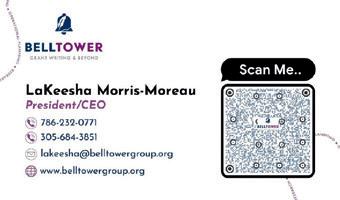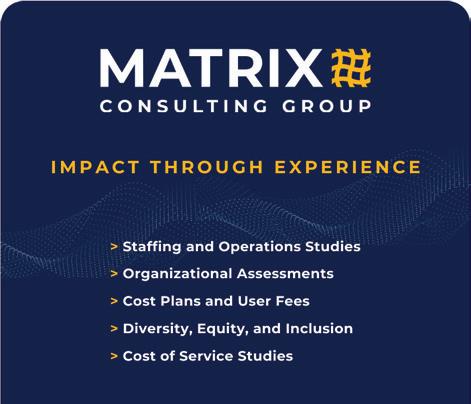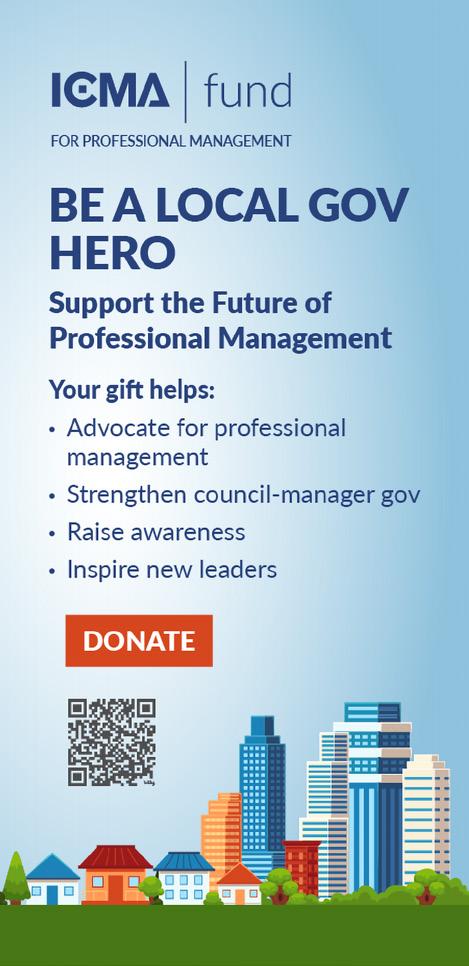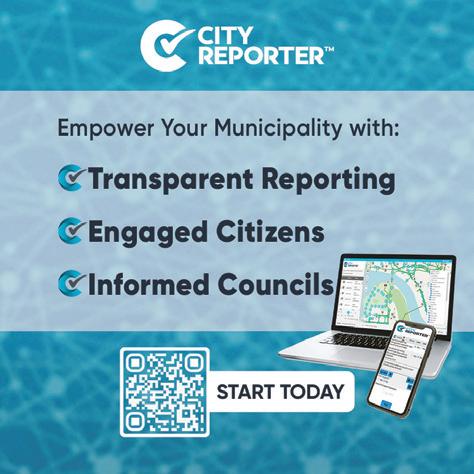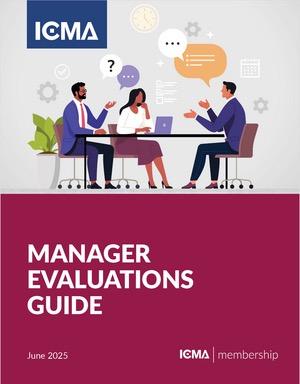of
Read more on page 22.


of
Read more on page 22.
























Recognition of individual ICMA member achievements in the areas of career excellence, development of new talent, excellence in leadership as an assistant (regardless of title), early-career leadership, academic contributions, and advocacy for the profession.
Recognition of outstanding local government programs in the areas of community equity and inclusion, community health and safety, community partnerships, community sustainability, and strategic leadership and governance.

Recognition of retired ICMA members who have made an outstanding contribution to the local government management profession.
Recognition of the dedication of ICMA members to public service and professional management at the local level, from 25 to 55 years of service.
Reimagining community through a visionary framework emphasizing trust, connection, and collaboration.
Jon Mallon, Christa Daniels, PhD, Tom Rossman, and Michelle Kobayashi
How


Join me in congratulating the recipients of ICMA’s 2025 Local Government Excellence Awards.
BY JULIA D. NOVAK, ICMA-CM
This may be the edition of Public Management Magazine that I look forward to most each year. It’s time for us to celebrate our members and connect one another with best practices being recognized in local communities through ICMA’s Local Government Excellence Awards. The professional awards focus on individual career accomplishments—leadership, contributions to the profession, etc.— and our program awards focus on innovative initiatives or processes that benefit the community.

JULIA
D.
NOVAK, ICMA-CM, is executive director of ICMA.
Learning about our professional awards—and the prominent figures they are named for—involves a little walk through ICMA history, from legendary city manager L.P. Cookingham to our very own ethics champion, Martha Perego. I hope members will appreciate the standard set by the individuals we remember with these awards. There is a high bar established for people to be eligible for these awards and receive an honor named for some of the true icons of our profession. This year’s awardees are very deserving professionals.
As you move to the program awards, you will learn about best practices in community equity and inclusion, health and safety, community partnership, sustainability, and strategic leadership and governance. These programs are building blocks of great communities and knowing how communities of all sizes are setting the standard in these areas creates opportunities to learn and innovate in your individual context.
International City/County Management Association icma.org
October 2025
Public Management (PM) (USPS: 449-300) is published monthly by ICMA (the International City/County Management Association) at 777 North Capitol Street. N.E., Washington, D.C. 20002-4201. Periodicals postage paid at Washington, D.C., and at additional mailing offices. The opinions expressed in the magazine are those of the authors and do not necessarily reflect the views of ICMA.
COPYRIGHT 2025 by the International City/County Management Association. All rights reserved. Material may not be reproduced or translated without written permission.
REPRINTS: To order article reprints or request reprint permission, contact pm@icma.org.
SUBSCRIPTIONS: U.S. subscription rate, $60 per year; other countries subscription rate, $155 per year. Printed in the United States. Contact: 202/289-4262; subscriptions@icma.org.
POSTMASTER: Send address changes to Public Management, ICMA, 777 N. Capitol Street, N.E., Suite 500, Washington, D.C. 20002-4201.
ARTICLE PROPOSALS: Visit icma.org/writeforus to see editorial guidelines for contributors. For more information on local government leadership and management topics, visit icma.org.

Early in my own career I received the Assistant Leadership Award in Memory of Buford M. Watson Jr., and it meant a lot to me because I knew Buford. He was city manager of Lawrence, Kansas, when I was a graduate student at the University of Kansas, and he was serving as president of ICMA that same year. In 1989, his untimely death at the age of 59 was a shock to our entire profession. Six months
Public Management (PM) icma.org/pm
ICMA
777 North Capitol Street, N.E. Suite 500 Washington, D.C. 20002-4201
EDITORIAL OFFICE: pm@icma.org
ADVERTISING SALES: Justin Wolfe, The YGS Group 717-430-2238 justin.wolfe@theygsgroup.com
ICMA MEMBER SERVICES: 800.745.8780 | 202.962.3680 membership@icma.org
ICMA Creating and Supporting Thriving Communities
ICMA’s vision is to be the leading association of local government professionals dedicated to creating and supporting thriving communities throughout the world. It does this by working with its more than 13,000 members to identify and speed the adoption of leading local government practices and improve the lives of residents. ICMA offers membership, professional development programs, research, publications, data and information, technical assistance, and training to thousands of city, town, and county chief administrative officers, their staffs, and other organizations throughout the world.
Public Management (PM) aims to inspire innovation, inform decision making, connect leading-edge thinking to everyday challenges, and serve ICMA members and local governments in creating and sustaining thriving communities throughout the world.

later, the city of Lawrence renamed their own Central Park in his honor. It became Watson Park, a fitting tribute to the impact he had on the city. (Not a lot of communities name parks after city managers.) And whenever I return to Lawrence, passing by the park is a reminder of the impact he had on me personally. Buford’s son Mark and grandson Kevin have both been active and engaged ICMA members as well, and I’m
proud that we have an award in memory of their father/grandfather.
Awards can connect what is “best” about our past to what is “best” about today, and I appreciate that connection. The standards set by the people and programs being recognized in 2025 set a new standard for us to strive for in the future. I hope you are inspired, and I hope that you consider how your own contributions are shaping your
community, your organization, and your profession. Each of us has the potential to make a positive and lasting contribution. It’s a reminder of the importance of the work we do.
Thanks for taking the time to read about your remarkable colleagues and the communities being honored. I can’t wait to see them walk across the stage in Tampa!
PRESIDENT
Tanya Ange*
County Administrator Washington County, Oregon
PRESIDENT-ELECT
Michael Land*
City Manager Coppell, Texas
PAST PRESIDENT
Lon Pluckhahn* City Manager Vancouver, Washington
VICE PRESIDENTS
International Region
Colin Beheydt
City Manager Bruges, Belgium
Doug Gilchrist
City Manager Kelowna, British Columbia, Canada
Lungile Dlamini
Chief Executive Officer
Municipal Council of Manzini, Eswatini
Midwest Region
Michael Sable*
City Manager Maplewood, Minnesota
Jeffrey Weckbach
Township Administrator Colerain Township, Ohio
Cynthia Steinhauser*
Deputy City Administrator Rochester, Minnesota
Mountain Plains Region
Dave Slezickey* City Manager The Village, Oklahoma
Pamela Davis
Assistant City Manager Boulder, Colorado
Sereniah Breland City Manager Pflugerville, Texas Northeast Region
Dennis Enslinger
Deputy City Manager Gaithersburg, Maryland
Steve Bartha* Town Manager Lexington, Massachusetts
Brandon Ford
Assistant Township Manager Lower Merion Township, Pennsylvania
Southeast Region
Jorge Gonzalez*
Village Manager Village of Bal Harbour, Florida
Eric Stuckey
City Administrator Franklin, Tennessee
Chelsea Jackson
Deputy City Manager Douglasville, Georgia
West Coast Region
Jessi Bon
City Manager
Mercer Island, Washington
Nat Rojanasathira*
Assistant City Manager Monterey, California
Elisa Cox*
Assistant City Manager
Rancho Cucamonga, California
*ICMA-CM
** ICMA Credentialed Manager Candidate
ICMA
Julia D. Novak, ICMA-CM Managing
Lynne Scott lscott@icma.org Brand Management, Marketing, and Outreach
Senior Managing Editor Kerry Hansen khansen@icma.org
Senior Editor Kathleen Karas kkaras@icma.org
Graphics Manager Delia Jones djones@icma.org
Design & Production picantecreative.com
BY JESSICA COWLES
The year 2013 was the year of the book, Lean In: Women, Work, and the Will to Lead; the iPhone 5s; the word “selfie” went into the dictionary; and when ICMA’s Code of Ethics review cycle first began!
Ensuring the Code’s relevance for all members working in service to a local government had been an ad hoc effort up until that point, with just a few revisions from 1924 through 1998.1
ICMA’s Committee on Professional Conduct (CPC) is a standing committee of the Executive Board (board). The CPC developed a plan to review a few principles of the profession at a time by engaging the membership through feedback on what works, what is missing, and what should be revised. This comprehensive effort had never been done before, and it was responsible to assess it just as local governments do for their own policies.
ICMA’s Constitution requires members vote by ballot to change the Code’s tenet language; the board has the authority to revise tenet guidelines, and this usually occurs at the CPC’s recommendation. As background, the tenets express the values of the local government management profession while the guidelines assist members in understanding their ethical obligations as outlined in the tenet.
Through at least 103 sessions, 11,000 member engagements such as attendance at a discussion or via written comments, and more than 10 feedback surveys, we have completed the review of all 12 tenets of the Code and their associated guidelines with the membership!

JESSICA COWLES is director of ethics at ICMA (jcowles@icma.org).
This past 14 months, the CPC completed the final two tenets for membership review: Tenet 8 (professional development) and Tenet 10 (job interference). The CPC facilitated conversations with members during the Local Government Reimagined Conferences and state association meetings, then invited all members to share feedback through a survey.
The CPC drafted proposed revisions and surveyed the membership again. The CPC further refined the tenet language, and members who responded to the final survey supported the CPC’s proposed changes
to Tenets 8 and 10. The board approved placing the revisions on the May 2025 ICMA annual election ballot. Members overwhelmingly voted in favor of the revisions to Tenet 8 (95% approval) and Tenet 10 (87% approval). The following is the updated Tenets 8 and 10 language:
Tenet 8. Continually improve professional capabilities and those of others while fostering growth and development through ethical leadership and effective management practices.
Tenet 10. Oppose efforts to interfere with professional responsibilities by consistently executing official duties, policies, and processes with an unwavering commitment to unbiased public service.
8,
Based on member discussion at eight conferences and via three online surveys, the CPC drafted proposed revisions to Tenets 8 and 10 guidelines, then the board voted to approve them. Members responding to the final survey approved the proposed guideline language. (For Tenet 8, 85% SelfAssessment and 81% Professional Development; and for Tenet 10, 81% Information Sharing and Feedback and 83% Personnel and Operational Matters). The comparison between the former and revised/current guideline language can be seen in Figure 1.
The CPC also received significant feedback about revisiting Tenet 3’s guidelines on Professional Respect and Conduct Unbecoming. The language of Tenet 3 is “Demonstrate by word and action the highest standards of ethical conduct and integrity in all public, professional, and personal relationships in order that the member may merit the trust and respect of the elected and appointed officials, employees, and the public.”
These two guidelines warranted review because they have been cited in ethics complaints, i.e., unsolicited public commentary about a colleague’s organization; managers whose conversations with governing body members and staff without informing their colleagues had the effect of undermining their successors; running for elected office in retirement in the community where the member recently served; and unprofessional conduct at work events. The comparison between the former and revised/current guideline language can be seen in Figure 1.
These revisions mark the completion of the Code review effort. To view a complete history of the Code, visit icma.org/page/ history-icma-code-ethics.
I’d like to extend a big thank-you first to our members for providing thoughtful feedback and suggested revisions to make sure the CPC and board got it right! I share congratulations especially to current and former CPC and board members for prioritizing this when there are many other issues competing for their time. ICMA’s former managing
Tenet 8
Self-Assessment. Each member should assess his or her professional skills and abilities on a periodic basis.
Professional Development. Each member should commit at least 40 hours per year to professional development activities that are based on the practices identified by the members of ICMA.
director of member services and ethics, Martha Perego, spearheaded the initiative for many years and the profession extends a big thanks for her leadership in ensuring the Code stays relevant for the next generation of local government practitioners.
ENDNOTE
1 https://icma.org/articles/pm-magazine/ethics-mattertm-icma-code-ethicsretrospective-past-12-years
Self-Assessment. Members should evaluate and enhance their professional skills and competencies annually through self-reflection and by proactively soliciting feedback.
Professional Development. Members should stay informed about emerging issues, practices, and challenges, actively engage in development activities year-round, and support others in enhancing their professional and ethical competencies.
Information Sharing. The member should openly share information with the governing body while diligently carrying out the member’s responsibilities as set forth in the charter or enabling legislation. This was the only guideline to Tenet 10.
Tenet 3
Former
Conduct Unbecoming. Members should treat people fairly, with dignity and respect and should not engage in, or condone bullying behavior, harassment, sexual harassment or discrimination on the basis of race, religion, national origin, age, disability, gender, gender identity, or sexual orientation.
Professional Respect. Members seeking a position should show professional respect for persons formerly holding the position, successors holding the position, or for others who might be applying for the same position. Professional respect does not preclude honest differences of opinion; it does preclude attacking a person’s motives or integrity.
Information Sharing and Feedback. The member should collaborate with the governing body to establish clear communication protocols for effective, equitable, and transparent information sharing and reciprocal feedback.
Personnel and Operational Matters. The member shall lead personnel and operating decisions consistent with responsibilities established in the charter or enabling legislation without interference from the governing body.
Conduct Unbecoming. Members should treat people fairly, with dignity and respect and should not engage in, or condone bullying behavior, harassment, sexual harassment, unwelcome contact, advances, or discrimination on the basis of race, religion, national origin, age, disability, gender, gender identity, sexual orientation, or veteran status. Members should foster respectful, inclusive environments in all professional and social settings.
Professional Respect. Members should demonstrate professional respect for colleagues, including predecessors, successors, and others who might be candidates for the same position. Professional respect does not preclude sharing honest differences of opinion privately between colleagues; it does preclude attacking a person’s motives or integrity, undermining them, or actively interfering with their work.
Showing professional respect involves acknowledging power dynamics between different career points and tenures. Undue influence, abuse of power, and intimidation are inappropriate and must be avoided.
A member no longer working in service to a local government should be mindful of professional respect before running for elected office in a jurisdiction where they recently served.
The Current State of Student Debt and Forgiveness | Savi
October 2 | Free Webinar
A Tale of Two Cities: Data That Reveals Why/When/How AI Deployments Fail Or Succeed in US Local Government | GovAI
October 7 | Free Webinar
Effective Supervisory Practices
October 8–December 17 | Training Series
A Budgeting Guide for Local Government
October 9–23 | Training Series
Beyond Access: Advancing Digital Equity, Accessibility, and Inclusive Engagement in Local Government | CivicPlus October 14 | Free Webinar
Asking Police Chiefs the Right Questions October 21 | Webinar
Emerging Leaders Development Program 2.0
January 27–June 30
Elevate your career with this six-month experience designed for early- to mid-level local government professionals aspiring to leadership roles. Through interactive workshops, flexible learning tracks, mentorship, and networking opportunities, develop essential skills in adaptive leadership, digital innovation, and community resilience.

Opening Session Begins April 15–17
Develop essential local government competencies through this one-year intensive program. Participants engage in 12 courses, interactive online learning, two in-person events, and a capstone project, gaining practical skills in ethics, communication, strategic leadership, and community engagement. Apply by December 5 to secure your spot!

For a full listing of events and details, visit icma.org/events. Shop all courses at learning.icma.org.

Title Sponsor

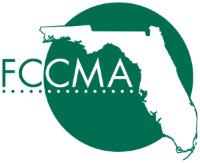
Champions



Sponsors

Supporters






Sponsors as of September 17, 2025



BY THE TOWN OF CARY, NORTH CAROLINA
What happens when a town decides to write its own story instead of letting others write it for them? Cary’s journey shows how vision and intentional leadership, through a culture where anyone can lead from their seat, can transform not just a community but the way we all think about what’s possible within local government.
The Top of the Arc: Cocreating a More Innovative, Adaptive, and Effective Local Government (Radius Book Group, 2025) is our contribution to the profession. Though our town manager, Sean R. Stegall, ICMA-CM, is credited as the author, the copyright belongs to the town because the voices in the book—council, staff, and residents—are what make it Cary’s story.
Like most of you, we work within a council–manager form of government. Our elected council sets policy, and nearly 1,300 staff carry it out. Cary sits in the heart of North Carolina’s Research Triangle and is often recognized among the nation’s best places to live. We’re grateful for those honors, but accolades don’t tell the full story.
For the past 17 years, Cary has maintained a steady population growth rate of 2 to 2.5% annually. That stability followed decades of hypergrowth that saw the town expand from 1,000 residents in the 1960s to more than 190,000 today. The shift from expansion to maturity brought new realities: redevelopment pressures, tougher choices, and at times humbling results at the ballot box. For a community once fueled by rapid growth, it meant learning to evolve differently.
It was in this context that council launched Imagine Cary in 2012, the most ambitious planning process in our history. Thousands of residents joined with council and staff to shape a single vision through 2040. With over 60 nationalities represented and one in four residents born outside the United States, creating a shared pathway forward was both daunting and energizing.
In 2016, council charged our town manager with making that vision real. Out of that challenge came a phrase we’ve carried ever since: “We are creating the local government that

doesn’t exist.” At first, it was casual, but people responded. Some heard a call to aim higher. Others pictured a government so seamless it hardly registered. What mattered most was the permission it gave us all to imagine a government that could be more adaptive, more human, and more effective than what we had known.
That spirit, and the culture we built together through the OneCary Toolkit, ultimately gave us the courage to share our story in The Top of the Arc.
Cary’s journey shows how vision and intentional leadership can transform not just a community but the way we all think about what’s possible within local government.
“The launch of Cary 311 was a confirmation of this. Staff developed new skills, got new titles, and worked with new equipment. … [That] paid off with increases in confidence and pride and a sense of empowerment.” —From Chapter 10, “The Top of the Arc and The Importance of Reinvention”
The first expressions of Imagine Cary weren’t abstract policies but projects that reshaped how our community works and lives:
Cary 311. A 311 system typically functions as a call center for non-emergency needs. We wanted ours to be something more. Today, each case is owned by a member of our citizen advocate team until it is resolved. Often the Salesforce case becomes a cross-department collaboration across all levels, reminding us that trust is built as much among colleagues as with residents.
Downtown Cary Park. What began as a modest greenspace idea two decades ago grew into a $70 million civic heart launched in 2023. Hosting nearly 500 events a year— from fitness classes to art displays and concerts to festivals—it has redefined Downtown Cary as a destination and given our community a new center of gravity. Its Nest play area, named the nation’s best public playground by USA TODAY readers in 2025, is only part of the story.
Fenton. For decades, Cary was defined by single-family neighborhoods and a “drive-through” downtown. Then, on 92 acres at our eastern gateway from Interstate 40, council approved the town’s first vertical mixed-use district. Nearly $1 billion in investment has created a new regional draw with a walkable hub of housing, retail, offices, and public space. More than an economic project, it marked the moment Cary embraced urban form and a willingness to grow up as well as out.
Each of these projects stretched us with council making bold choices, staff providing the expertise to carry them out, and residents trusting their government to deliver something beyond the ordinary.
“It’s easy to view referendums in up-or-down victories or defeats. But none of the referendum projects, which were
inspired by the Imagine Cary Community Plan, have been completely wiped off the table forever. Only the proposed specific funding mechanism that would have propelled the projects forward was stopped.” —From Chapter 8, “Changing the Horizons”
In 2024, Cary voters rejected $590 million in bond referendums for parks, recreation, and housing. For decades, bonds had passed by wide margins. This time, after a tax increase and earlier bond approvals, many residents shared they had simply reached their limit. Voter fatigue was real.
For a community used to strong support on these referendums, it was humbling. But it also was clarifying. As Cary has matured, we’ve learned that choices get harder, not easier. And that lesson isn’t only for elected officials or senior managers. In our culture, anyone can lead, whether in a council seat, a crew leader’s role, or through influence without a formal title. Leadership is about recognizing when a community says, “not now,” and responding with candor, adaptability, and persistence.
“Aiming for excellence and then achieving that goal requires dreaming and analyzing, investing and taking risks, and embracing responsibility. Repeating that process requires building a culture that embodies and sustains our commitment to excellence, to staying at the top of the arc.” —From Chapter 7, “Consensus Building and Development”
Projects can change landscapes, but culture sustains excellence. The values shared in our OneCary Toolkit, detailed in The Top of the Arc, remind us that innovation doesn’t come from a handbook but from empowering staff to lead at every level. One of our favorite commitments is simple: “We reserve the right to get smarter as we go.” That mindset has freed us to adapt, to learn publicly, and to evolve without apology.
Across America, redevelopment pressures, financial limits, and rising expectations are testing local governments. Cary’s story is not a prescription, but an encouragement: we’re all capable of creating the local government that doesn’t exist when we choose to cocreate with our elected officials, our staff, our residents— and one another.
The Top of the Arc is Cary’s story told through the voices of past and present councilmembers, our staff, and our community. We share it not as an ending, but as an invitation to peers across the profession. Sustaining excellence isn’t about preserving what is. It’s about creating what could be.
Read Cary’s journey in The Top of the Arc, and then share your own, so together we can keep creating the local government that doesn’t exist.

A community-driven transformation to promote sustainability, biodiversity, and resource efficiency in West Burlington, Iowa
BY GREGG MANDSAGER, ICMA-CM
In West Burlington, a meaningful transformation is taking root—not just in our soil, but in our vision for the future. Across our community, native prairie plants and grasses are being planted in parks, along trails, and even around our wastewater treatment plant. The city has launched several native prairie and pollinator park projects, transforming public spaces into thriving habitats for pollinators with resilient native plants, all while creating places for community enjoyment. These micro prairies and pollinator parks aren’t just beautiful; they’re purposeful. They reflect a commitment to sustainability, habitat restoration, and practical stewardship of city resources.
This work is rooted in partnerships—with local experts, passionate volunteers, and organizations like the University of Iowa’s Institute for Sustainable Communities (IISC). Through this growing network, we’ve created something uniquely West Burlington: a city-led, community-supported approach to conservation and smart land use.
We’ve teamed up with Sam Hollingsworth of Prairie Roots for prairie design and installation, while master gardeners from the community generously gave their time to help get the plants in the ground. City staff, particularly from public works, have been essential in site preparation, mulching, watering, and maintenance. Together, we’re proving that even small urban projects can have meaningful environmental and social benefits.

GREGG
MANDSAGER, ICMA-CM, is city administrator of West Burlington, Iowa, USA.
We’ve launched several prairie initiatives across the city: City Hall and Trail Micro Prairies: Compact, densely planted gardens featuring native grasses and wildflowers. These vibrant sites were designed in partnership with Prairie Roots and installed with help from local volunteers and city staff.
Pat Kline Park: A larger prairie restoration designed by IISC students and faculty, including Professor Mike Fallon. Their work included research, design, and community outreach—culminating in a new kind of park that prioritizes ecology and education.

Wastewater Treatment Plant: Native habitat has been added both inside and outside the plant’s perimeter. A short walking path allows residents to explore this natural space and see native wildflowers in bloom and pollinators in action.
Native plants like milkweed, coneflowers, little bluestem, and black-eyed Susans are well-adapted for Iowa’s soil and climate, offering a sustainable and efficient alternative to traditional turf grass. Native plantings are far more resilient and require less water, mowing, and maintenance once established. Their deep root systems:
• Help retain soil and prevent erosion.
• Improve water infiltration and reduce runoff.
• Store carbon and support healthier air and water.
• Survive droughts and extreme weather.
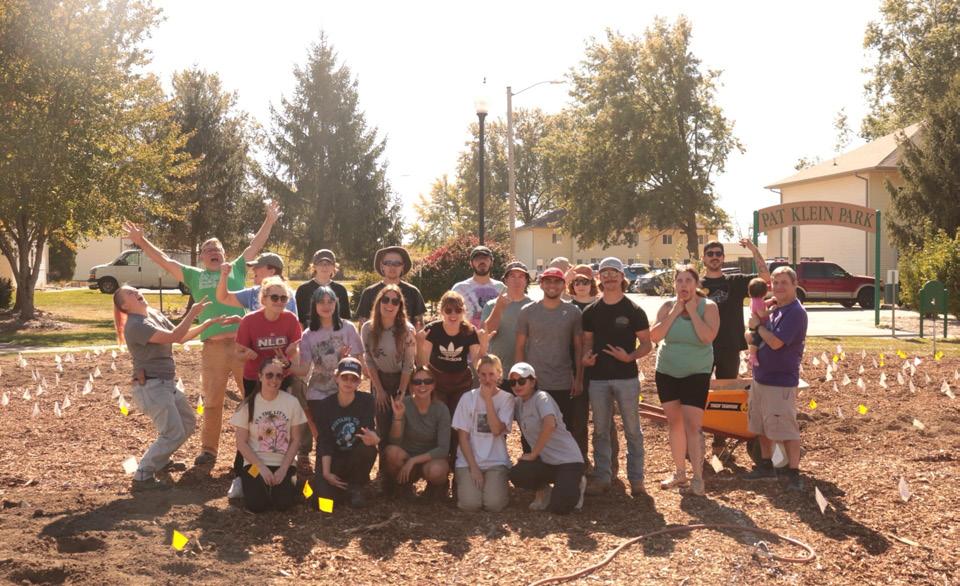
By shifting from turf to prairie in select public spaces, we’re saving time, fuel, and money—freeing up resources for other city needs, such as road repairs and community projects.
Beyond their practicality, prairies are essential to restoring biodiversity. They provide vital habitat for pollinators—bees, butterflies, birds, and other species whose populations are declining due to habitat loss and pesticide use. By integrating prairies into our public spaces, we’re helping pollinators thrive while improving soil health, filtering stormwater, and reducing maintenance costs. In a time of increasing environmental challenges, small local actions like these help build resilience.

Native plantings are far more resilient and require less water, mowing, and maintenance.
Pollinators are critical to ecosystems and agriculture, yet many are under threat. Cities like West Burlington can play an important conservation role by restoring native habitats in public spaces. Our plantings include a wide range of species that bloom from early spring through late fall, beautifying the city and ensuring a continuous food source for pollinators throughout the growing season.
Educational signage will soon be added to each prairie site, highlighting what’s growing, why it matters, and how residents can engage with these spaces. We hope these natural areas will not only enhance beauty and biodiversity but also inspire learning—serving as living laboratories for local students, scout troops, gardeners, and nature lovers.
Whether you’re walking the trail, watching butterflies, or just enjoying a quiet moment outdoors, these spaces offer something for everyone and demonstrate our shared responsibility as stewards of the land and city resources.
West Burlington’s prairie and pollinator projects are a testament to what’s possible when cities think long term and work collaboratively. With thoughtful planning and community partnerships, we’re making the most of our public spaces—saving resources, supporting wildlife, and enhancing quality of life. By restoring a piece of Iowa’s natural landscape, West Burlington is investing in both its environment and its future, creating healthier spaces for generations to come.
As we continue to grow as a community, we’re doing so in a way that respects and restores Iowa’s natural heritage. Our small prairies may not cover vast acres, but they carry a big message: that sustainability starts at home, and that every square foot of native habitat matters.
BY RICH MORAHAN

RICH MORAHAN writes frequently about security and marketing for a number of industries, including ATMs, information management, petroleum and propane distribution, and vending. Contact him at 617-2400372 or rmwriteg@ gmail.com, or visit rmorahan.com.
For information about enclosures and cages, contact:
D&M Manufacturing backflowtheft.com info@backflowtheft.com
866-308-9911, 951-674-1908
Safe-T-Cover safe-t-cover.com
customerservice@ safe-t-cover.com
800-245-6333
For information about security locks, contact: Lock America, Inc.
laigroup.com sales@laigroup.com
800-422-2866
Recently, the Denver city council passed new regulations on scrap metal transactions in an effort to deter scrap metal theft. As reported by Denverite and Colorado Public Radio, this proposal requires scrap dealers to:
• Refuse all cash transactions.
• Keep detailed records of purchases from scrap sellers.
• Collect signed affidavits explaining how and where the scrap metal was obtained.
• Keep copies of photo IDs and license plate numbers.
Officials with the department of excise and licensing and the Denver police department would have the power to inspect transaction records and inventory at scrap merchants. Noncompliance could result in fines of up to $5,000 per violation per day, as well as license revocation.
Last year I reported on the increase in fire hydrant thefts, and some of the efforts to stem the tide. In the past year, some water commissions have taken the initiative to protect their assets.
Marko Mlikotin of Randle Communications notes the success of its client, Golden State Water Company of San Dimas, California, installing hydrant shields with locks. “After experiencing 396 fire hydrant thefts in 2024, resulting in a loss of $2 million, thefts have decreased significantly in 2025. This is partly due to the installation of security devices such as collars and tracking devices on fire hydrants, increased policing, and a public education campaign that discourages scrap yards from accepting stolen property and encourages customers to report thefts in progress.”

Shields and locks, increased law enforcement and community awareness, and close monitoring of scrap metal dealers all appear to have played a part in reducing theft.
Regulations such as Denver’s can deter threats to a city’s infrastructure, but a hardened target remains an organization’s first line of defense against theft. Denver is not alone. From Columbine and Littleton in Colorado to Southern California to Florida, scrap metal theft can cost municipalities thousands of dollars, even when there is only a small return for the criminal.
This article will focus on measures to deter theft of brass valves and water infrastructure elements. I’ll highlight some basic protective steps for copper in my summary. Enhanced regulations, heightened public awareness, and restrictions on cash sales can deter crooks, but the major tactic to protect backflow valves and water infrastructure is hardening the target with cages, enclosures, and locks.
Communities and water commissions have a variety of upgrade paths to protect their assets. Companies such as D&M Manufacturing of Lake Elsinore, California, manufacture a variety of protective devices, from open cages to sealed boxes and custom shackles.
Source: Randle Communications
A cage secured with a high-security “hockey puck” lock provides a straightforward upgrade. D&M uses high-security locks from Lock America, Inc. of Corona, California, for all its products. These locks feature tamperresistant keyways and key control with key registration to each customer. D&M also offers customer security boxes with shielded locks and a retrofit shackle option, a

cost-effective upgrade that is also based on Lock America’s lock system.
Safe-T-Cover, located across the country from D&M in Nashville, Tennessee, produces a wide range of enclosures, including some especially suited for harsh environments in the northern U.S. As an additional option to their enclosures, Safe-T-Cover offers a patented MUNILOK system, which addresses the frequent issue of customers not locking their enclosures. MUNILOK automatically secures the enclosure at installation and integrates with a city’s existing utility vault key system, giving authorized personnel quick access without compromising security.
A system for smaller applications features a flushmounted locking rod and tamperresistant puck-style lock that eliminates exposed hasps, reducing vulnerability to bolt cutters.
Safe-T-Cover has recently introduced a firerated enclosure built with NFPA 285compliant panels. Ideal for urban areas and public spaces, this enclosure resists flame spread and discourages misuse while offering the durability and security SafeTCover is known for.
In addition to securing hardware on the spot, a number of municipalities, such as Glendale, Arizona, make additional suggestions:
• Paint, coat, or label valves and pipes to decrease resale value.
• Sample, label, or code to brand contraband.
• Post warnings and use surveillance when possible.
Unlike backflow valves and hydrants, which are cumbersome objects that can be shielded and locked, copper wire is everywhere. Cities can only secure a fraction of the target.



It’s possible to increase the security for traffic and electrical boxes, but the more practical tactic to prevent copper theft is to attack the dealer, as the recent multi-department investigation in San Jose, California, demonstrates.
Detectives with the police department’s vice unit targeted several recycling centers in the city following an increase in copper wire thefts. Undercover officers conducted a successful sting operation with spools of copper wire, electronic components, and metal items to sell as “stolen” property, successfully busting some shady scrap metal dealers with the help of the department’s financial crimes unit and the city’s department of transportation.
“If you do business in San Jose, you have to follow the law,” said Police Chief Paul Joseph in a prepared statement. “We will not tolerate crime, whether you are the one stealing the copper wire or purchasing it with the intention of making a dime off of victims.”
At a roundtable of business and municipal leaders in June, California Attorney General Rob Bonta issued a new law enforcement bulletin that summarizes the California statutes related to copper wire theft and laws governing junk dealers’ and recyclers’ obligations to collect and report information on copper transactions.
The solution here appears to be enhanced enforcement at the dealer market especially by prohibiting cash sales, requiring identification for transactions, and increased public awareness. There are copper disguises (spray painting to mimic plastic, for example) to protect the target, but until the price level drops below the risk level, copper will attract low-level crooks and shady scrap metal dealers.
Fire hydrants and back flow valves appear to lend themselves to hardware protection, but increased awareness and proactive tactics may make a dent in the copper theft market too.


















































As the city manager of McKinney, Texas, Paul G. Grimes exemplifies commitment to excellence in local government and dedication to creating thriving communities. His leadership style has transformed McKinney’s workplace culture and improved countless lives across the community he serves.
For nine years, Grimes has guided McKinney through transformational changes that have strengthened the larger community, and his leadership style has been central to his success. After assuming the role of city manager, Grimes initiated efforts to gather staff input and promote organizational cohesion. Through personally leading nearly 50 small group meetings with employees, four core organizational values were identified: respect, integrity, service, and excellence. These values were foundational to all the positive changes that followed.
managers and an emerging leaders course for promising junior staff. Partnering with the University of Texas at Dallas, employees gained access to graduate certificate programs in local government management. He also started a “buddyto-boss” course for employees promoted into their first supervisory role. Grimes prioritized staff development by establishing an organizational development department that now offers more than 100 classes and workshops to employees each year.
His legacy of leadership has left a longstanding impact on the community.





Grimes’s leadership emphasizes the importance of input from employees at every level. He led the establishment of strategic working groups like the executive leadership team and department leadership teams to carry out a philosophy that embodies a shared approach to leadership. There are several successful outcomes generated from his leadership efforts that highlight the excellence achieved in his career, some of which are outlined here.
Staff development. Grimes implemented several initiatives to promote opportunities for staff to learn and grow. They include the establishment of a leadership academy for supervisors and
Workplace culture and communication. Grimes’s organizational vision is focused on the power of creating strong relationships to build trust and increase efficiency. By inviting staff to provide input at every level, his efforts led to improved relationships across departments and increased employee engagement to more than twice the national average. In response to a growing need to improve communication, Grimes implemented several key strategies, ranging from informal breakfast meetings to formal organizational “cascades” for staff across departments to connect and discuss relevant issues with one another.
A number of city-wide infrastructure improvements have been made, such as the construction of a new city hall complex; the completion of multiple capital projects, including approval of a new airport passenger service terminal; the improvement of recreational centers; and securing long-term funding for road maintenance. As these projects were completed, a total of $96 million in grant support was secured, ensuring a decreased tax burden for residents. Furthermore, in 2024, USA Today named the city of McKinney one of the “Top Places to Work in America.”
This award was established in memory of former ICMA Executive Director Mark E. Keane. With funding support from MissionSquare Retirement, this award recognizes an outstanding local government administrator who has enhanced the effectiveness of government officials and consistently initiated creative and successful programs.
The attempt to improve communication efforts was not limited to employees. By increasing regular communications with local nonprofits and organizations, trust has grown between the city and the community. For example, during the height of the COVID-19 pandemic, McKinney’s vaccination hub administered 70,000 shots to residents through efforts led by Grimes in partnership with local community organizations.
Community-driven results. Throughout this time as city manager, Grimes has achieved real results that have had longstanding effects on the lives of residents. The city of McKinney has repeatedly received national recognition for the quality of life it offers the community.
Under City Manager Paul Grimes, McKinney has seen notable success. His legacy of leadership has driven significant achievements and left a longstanding impact on the community, and his career has embodied excellence in local government.
































Assistant Town Manager, Sahuarita, Arizona, USA

















Beth Abramovitz recognizes that tomorrow’s leaders can often be found among today’s staff. She doesn’t let current job titles or responsibilities hold people back from pursuing their passions.






Abramovitz came into her role as assistant town manager from a management position in the Sahuarita public works department. She knows firsthand the value of developing internal talent and finding opportunities for local government professionals to thrive outside of traditional career paths. She currently oversees four departments with eight employees in leadership roles, four of which were promoted into these positions under Abramovitz’s leadership. She is the kind of leader who recognizes, encourages, and develops the talent that surrounds her. One of her colleagues noted that in his interview Abramovitz described her leadership style as hiring the best people to do all the things she doesn’t know how to do and trusting them to do the job effectively and efficiently. This leadership style is demonstrated through her ability to mentor others and open doors to new opportunities.
An example of this leadership and mentorship can be found in the career pathway of the town’s community development deputy director. He had a background in planning, but he sought to do something different. After finishing a program in human resources management, he found himself in a dead-end position in
another community. When an opportunity opened in Sahuarita, Abramovitz quickly hired him and provided him with opportunities in public works, planning, and parks and recreation. In addition, she found new projects related to the town’s human resources that allowed the employee to explore his interests beyond the confines of the role. As a result of Abramovitz’s encouragement and professional support, he is now part of the leadership team in the town manager’s office and is able to pursue multiple areas of interest and grow his local government expertise.
In addition to helping staff explore new areas and obtain promotions, Abramovitz encourages her staff to join professional associations and participate in events outside of the employee’s immediate field but still related to local government. She consistently helps others improve their presentation skills and expand their networks by providing opportunities for staff to present at professional conferences or to community groups. She helps employees improve their job performance, enhance their knowledge of interdepartmental functions, and develop greater confidence in themselves and their work.
She is the kind of leader who recognizes, encourages, and develops the talent that surrounds her.
from the Women’s Transportation Seminar, and the Jane L. Morris Scholarship from the Arizona City Management Association.
Abramovitz’s ongoing assessment of internal talent to offer relevant career opportunities has improved Sahuarita’s culture, making it a valued workplace where talent is recognized.
This award goes to an outstanding local government administrator who has made a significant contribution to the career development of new talent in professional local government management, in honor of former ICMA President L. P. (Perry) Cookingham, who is credited with creating the local government internship.
Abramovitz is not only a leader among staff but a leader within the community as well. She guided the town’s parks and recreation department through a collaboration with a local mining company and a nearby Indian reserve to develop a park on a former smelting site. This project earned a local award for its exemplary level of collaboration, cooperation, and communication.
While her projects have been recognized, she herself has also been lauded for her exceptional leadership and dedication. She received the Professional Manager of the Year award from the Arizona Chapter of the American Public Works Association, the Woman of the Year award










ASSISTANT EXCELLENCE IN LEADERSHIP AWARD IN MEMORY OF BUFORD M. WATSON JR.



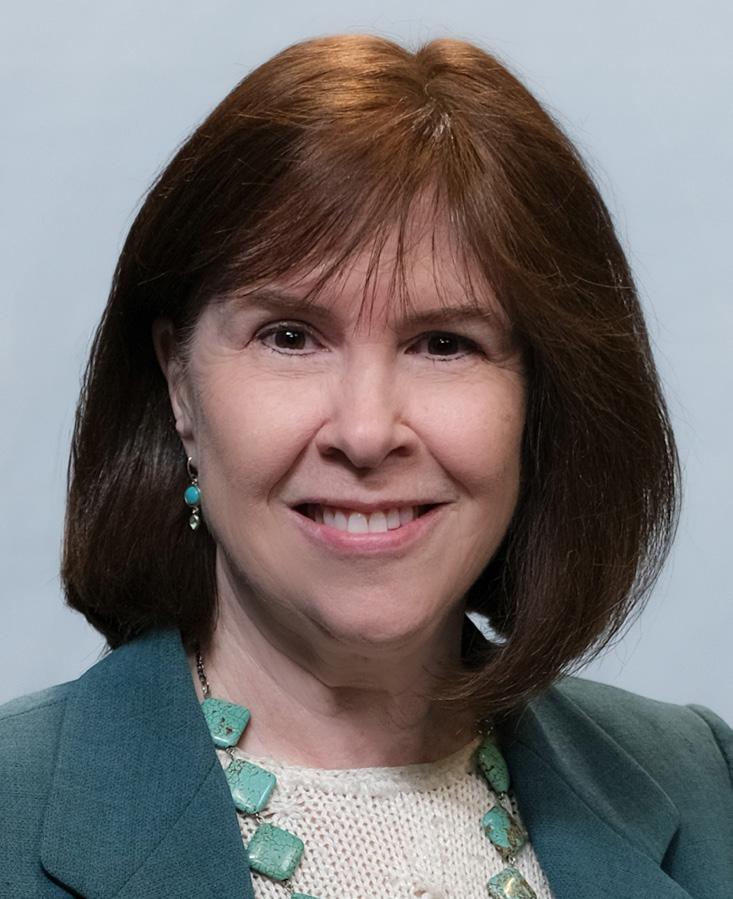











Assistant City Administrator, O’Fallon, Missouri, USA
























Lenore K. Toser-Aldaz embodies the essence of service. She works tirelessly behind the scenes to elevate everyone around her and is fully dedicated to helping employees, supervisors, and elected officials achieve success in their roles. In times of need, she is always willing to step up and support the O’Fallon community. Her dedication and tireless work ethic are a model for all employees.






Serving as O’Fallon’s assistant city administrator since 2011, Toser-Aldaz’s calm and steady leadership has helped the city navigate challenging times and ensure that the needs of residents and businesses were met despite leadership changes. Her thoughtful guidance provided stability and reassurance for staff and elected officials as she was called upon to serve as interim city administrator three times over the last 14 years. This leadership has contributed to minimal staff turnover, which has ensured consistency and excellence in service delivery for the community. Her reputation as a trusted and selfless leader preceded her time in O’Fallon as these traits were recognized in previous roles in Clayton, Missouri; Johnson County, Kansas; and Kansas City, Missouri.
Toser-Aldaz’s leadership goes beyond city staff and has extended to the community and outside organizations. Through oversight of both planning and development and economic development, Toser-Aldaz has had a hand in virtually every major development in the city during her tenure. With her ability to navigate complex projects and communicate issues simply and effectively, she has played an integral role on the city’s negotiating team
to help bring quality projects to fruition. She has also served on the board of directors for both the St. Louis Area City Management Association, culminating as president; and the Missouri City Management Association, from which she received the organization’s highest leadership award for assistants.
In overseeing various city departments, it’s clear that her support and guidance have propelled the city staff forward. In keeping with the city’s commitment to transparency and community engagement, the communications department operates a 24-hour television channel that airs all city meetings, as well as original programming and public service announcements. The department has also recently redesigned and relaunched six websites to ensure accessibility and ADA compliance ahead of regulatory deadlines. The human resources department has conducted multiple salary studies to ensure fair and competitive compensation, and the department has updated policies and improved recruitment processes. The information technology department transitioned to cloud-based infrastructure and implemented a work-from-home program, which also contributed to staff recruitment, retention, and work-life balance.
Her calm and steady leadership has helped the city navigate challenging times, and her thoughtful guidance provided stability and reassurance.
This award, commemorating former ICMA President Buford M. Watson Jr., honors a local government management professional who has made significant contributions toward excellence in leadership as an assistant (regardless of title) to a chief local government administrator or department head.
Through this visionary leadership, she has distinguished herself as a principal member of the team and an asset to the organization. Her achievements make O’Fallon a better place to live, work, and play now and for the future.










ACADEMIC AWARD IN MEMORY OF STEPHEN B. SWEENEY



















Associate Professor and Associate Director, School of Public Affairs (Master of Public Policy and Administration Program), University of Utah





















Jonathan M. Fisk serves as the associate director for the School of Public Affairs at the University of Utah. Previously, he was an associate professor at Auburn University, where he contributed significantly to student development. Drawing on his extensive experience, professional network, and resources, Dr. Fisk demonstrates a strong commitment to supporting the next generation of leaders in local government management.
Fisk first became intrigued by local government management when receiving his master of public administration from the University of Kansas and through experiences such as his work as a research associate with the League of Kansas Municipalities. He earned his PhD from Colorado State University and has focused his career on encouraging students to engage in public service.
students were accepted as ICMA Local Government Management Fellows and have since launched their careers across the country. Fisk worked tirelessly to assist in securing impactful work opportunities for his students so they could gain knowledge, expand their skill sets, and advance their network of local government professionals.





At Auburn University, Fisk taught courses in leadership, public administration, public personnel administration, and ethics while inspiring students to pursue a career in local government. Notably, he exposed aspiring local government leaders to available resources like the Alabama City-County Management Association (ACCMA) and ICMA. Fisk’s encouragement of local government initiatives and ongoing support for his students is reflected in their achievements and engagement with insightful career opportunities. Over the years, many of his students have participated in AACMA and ICMA conferences and events. Ten of his
One of Fisk’s key accomplishments as an associate professor is exemplified in his collaboration with students to create an ICMA Student Chapter at Auburn University. The students who worked alongside Fisk became the chapter’s first president and vice president, and he served as the chapter’s faculty advisor during his tenure. Through his collaboration with the Government and Economic Development Institute at Auburn University came the development of a scholarship program that supported the annual part of five students in the ACCMA Local Government Professional Management Certificate Program.
Fisk has consistently demonstrated a strong commitment to preparing the next generation of local government management professionals for success.
excellence from Auburn University and the ACCMA.
Established in the name of Stephen B. Sweeney, the longtime director of the University of Pennsylvania’s Fels Institute of Government, this award is presented to an academic leader or academic institution that has made a significant contribution to the formal education of students pursuing careers in local government.
Fisk has facilitated the integration of students into the local government management profession through participation in meaningful experiences, though his impact extends beyond his efforts to expose his students to key opportunities for professional development. His academic accolades include the inclusion of his publications across prestigious journals and policy blogs, such as the American Society for Public Administration (ASPA). He has served on ICMA’s Graduate Education Advisory Committee and served as the chairperson for ASPA’s Section on Environment and Natural Resources Administration (SENRA). He has been repeatedly recognized for his academic achievements and contributions, including awards for distinguished service and teaching
Fisk has consistently demonstrated a strong commitment to preparing the next generation of local government management professionals for success, a dedication that has remained steadfast throughout his career transitions and will surely continue into the future.





























Director of Strategic and Government Affairs, Sugar Land, Texas





















Shayla Lee’s visionary leadership, strategic approach, and unwavering commitment to public service have allowed her to rapidly ascend through the ranks and distinguish herself as an early career local government leader.
Lee began her career as a management analyst in the city of Sugar Land’s data and innovation department.
In this role, she was seen as an innovative problem solver, which led her to be quickly promoted to the role of assistant to the city manager, where she worked on citywide strategic initiatives. As a result of her success, she was tasked with leading the newly formed strategic and government affairs department.
strengthening collaboration, streamlining processes, and driving innovation across the organization.
Lee is a trailblazer in local government, demonstrating exceptional leadership, innovation, and strategic foresight.





In her current role, she is responsible for the development and implementation of the city’s most robust and comprehensive strategic action plan. She has taken the city to new levels of success in data-driven governance, strategic planning, and intergovernmental relations, which has helped position the city as a leader in these areas.
Lee is a proactive and results-driven leader, known for her ability to drive organizational change, cultivate talent, and implement innovative strategies. Three of these strategies include:
Strategic Decision Making. She possesses an exceptional ability to anticipate challenges and implement proactive solutions. In overseeing the merger of the data and innovation department with the strategic and government affairs department, she has played a key role in
Collaborative Leadership. Lee has built strong relationships with the city council, department heads, and external partners to advance Sugar Land’s priorities. She is highly regarded for her ability to bring people together and facilitate crossdepartmental collaboration to improve operational efficiency. She has enhanced the city’s relationship with the Fort Bend Independent School District by mentoring high school students and providing them with leadership opportunities and hands-on experience in local government.
Commitment to Professional Growth. As a champion for talent development, Lee has strengthened Sugar Land’s management analyst program, ensuring that emerging professionals receive mentorship, hands-on experience, and leadership opportunities to grow in local government.
demonstrating exceptional leadership, innovation, and strategic foresight. Through her work in strategic planning, employee empowerment and interdepartmental collaboration, she has transformed city operations, enhanced workplace culture, and positioned Sugar Land as a model for excellence in local governance.”
Established in memory of former ICMA Executive Director William H. Hansell Jr., this award recognizes an outstanding early career local government professional who has demonstrated leadership, competency, and commitment to local government as a profession.
Outside of her work in her department, Lee is committed to improving staff culture. She was a founding member of the City Care Club, which provides support to employees in times of hardship and celebrates employee milestones and successes. This group is built on the core principles of transparency, accountability, and fostering a culture of care. This initiative has contributed greatly to staff morale and reinforces the city’s commitment to employee well-being and community building.
Lee’s management style is based on three core principles: encouraging innovation, prioritizing mentorship and development, and building a culture of accountability and engagement. These values are present in all of her work and help her to succeed in her daily operations.
As her nominator noted, “Lee is a trailblazer in local government,
Bondurant, Iowa, USA
Marketa George Oliver, ICMA-CM, City Administrator

Bondurant seeks to create community spaces for people of all abilities to ensure that no resident faces barriers to accessing community life. Through investment in accessible facilities, the creation of inclusive programming, and the development of public-private partnerships, Bondurant has prioritized creating an accessible, welcoming community for all.
Ensuring the availability of free and accessible recreational opportunities was a top priority for Bondurant. As a result, the city invested nearly $2 million to install adaptive playground equipment including an assisted zip line with a secure harness, a wheelchair-accessible merry-go-round, an innovative swing that accommodates wheelchair-users, and sensory-friendly areas. The


second phase of the project will bring a splash pad and adaptable swing set that will expand the available community play options.
The carefully selected elements ensure that children with mobility or sensory challenges can play with their peers and that all families, regardless of ability, can access highquality, free recreational spaces in their own community.

Bondurant partnered with private developers and nonprofit organizations to develop a downtown that combines historic preservation with accessibility and innovation. This project follows a jointly developed master plan that included community input. The highlight of the redevelopment is the T12 Distillery, which is run by a community member who uses a wheelchair after enduring a spinal cord injury. The space is fully accessible and not only serves as a distillery but also as an educational and philanthropic hub that raises awareness of spinal cord injuries and supports related nonprofit organizations. Collaboration with community members, private developers, and nonprofit organizations ensures that the city meets the needs of all residents while also honoring Bondurant’s rich agricultural history.


In addition to the partnerships developed in the redevelopment project, Bondurant has taken their commitment to accessibility and inclusion a step farther by partnering with the nonprofit organization Can Play, which provides adaptive sports and recreation programming for individuals facing physical, cognitive, and financial barriers. To ensure the community is able to take full advantage of these offerings, Bondurant developed its first building dedicated exclusively to parks and recreation. The adaptive reuse project called The Station redevelops an old emergency services building into an inviting community space that can host programming and includes a variety of services such as a wellness room. The new building fills a critical gap in the city’s infrastructure and provides an opportunity for all residents to fully participate in recreational activities. Individuals of all abilities will be able to use this space to connect, feel valued, and thrive.
Bondurant’s commitment to community equity and inclusion shines through these recreational initiatives. The success of this project showcases the importance of the key pillars of collaboration, innovation, and intentionality. By ensuring community involvement and partnering with innovative developers and nonprofit organizations, Bondurant shows that equity and inclusion is not a one-size-fits-all solution. Careful planning, collaboration between city staff and community members, and creativity help design programs and spaces that serve everyone.
Melissa A. Valadez, ICMA-CM, City Manager
Chasidy Benson, Assistant City Manager
Alison Ream, Assistant City Manager



When building a new library, the city of Cedar Hill looked to create more than just a space for books. They sought a true community hub that provided a variety of resources for residents while also maintaining the values of accessibility, equity, and sustainability. To do this, they had to rethink traditional locations and building structures and spend significant time engaging all stakeholders.
This first-of-its-kind facility was developed through extensive public engagement, data-driven planning, and strategic investments. The investment came from a combination of public funds, private investments, and grant funding to allow the Traphene Hickman “Library in a Park” to realize its full potential as a cultural destination to stimulate economic development and civic engagement.
The library includes cutting-edge technology, a museum of city history, a professional podcast and music recording studio, nature trails, public art, and an outdoor performance area in the heart of the Signature Park. Sustainability was at the forefront in design considerations for the Library in a Park, garnering the city’s first LEED Silver certification for its incorporation of innovative energy saving features and context sensitive design. In keeping with the city’s sustainability values, trees removed from the construction site were repurposed to create custom furniture, interior wall panels, and decorative features throughout the building—ensuring that
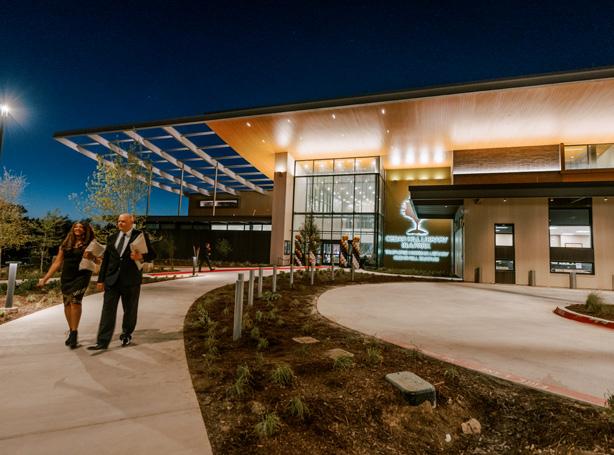
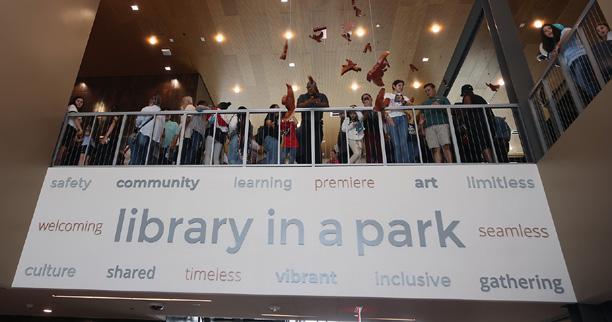
nature remained an intentional part of the space. Its unique location allows for community access to expand beyond the building itself and for residents to enjoy activities beyond the traditional features of a library, incorporating both nature and play. As a result, the library has seen great success, including a 250% increase in membership within the first six months of operation, more than 40,000 attendees at events and programs, hundreds of entrepreneurs and small businesses engaging with the business center, and more than 30,000 visitors to the Signature Park since its opening.
The success of the library goes beyond the grounds. The new opportunities spurred by the catalytic nature of this project are expected to exceed over $155 million in private investments in the Midtown District where the facility is located. The Library in






a Park has become a powerful symbol of equity and innovation for the Cedar Hill community and other communities that look to the success of Cedar Hill as a model for their own projects. The commitment to equity and inclusion began from the project’s development. Overall, 48.6% of project expenditures were with minority- and women-owned businesses, far surpassing traditional diversity benchmarks, and the end result demonstrates how local governments can redefine public spaces to drive both social and economic progress.
In addition to being a great success for the city of Cedar Hill, the Traphene Hickman Library in a Park sets an example for other local governments looking to develop similar centers of community life. The intentional focus on inclusivity from the very beginning stages led to a community resource for all—a location truly beyond the traditional library—brought to life through the collective fingerprints of a community deeply invested in its future. Cedar Hill was very fortunate to have strong support from elected leadership and the community at large, both young and old. The community support led to intensive public engagement that led residents to feel invested in the process and allowed them to contribute to the overall design and development. The city also used this as an opportunity to showcase the project to the media and raise awareness about the role of local government in innovative urban planning. The Library in a Park is more than a library. It is a key feature of Cedar Hill’s community life that showcases the power of inclusive, forwardthinking, community-driven governance.
























































Austin, Texas, USA
T.C Broadnax Jr., ICMA-CM, City Manager
Jon E. Fortune, Deputy City Manager
David Gray, Director, Homeless Strategy Office



In December 2023, the city of Austin opened the Eighth Street Women’s Shelter to address a critical gap in the local homeless response system: the lack of gender-responsive shelter options. Data showed that 40% of Austin’s unhoused population identified as women or gender-diverse, yet existing shelters often failed to meet their distinct needs. Without access to safe and inclusive environments, many women and gender-diverse individuals were discouraged from seeking shelter or support.
To address this gap, the city of Austin purchased The Salvation Army’s former Downtown Center that was slated to close due to high operating costs. The city quickly redeveloped the building with the intention of providing safe, accessible, and effective services specifically designed to meet the needs of women, transgender, and nonbinary people experiencing homelessness. Guided by input from individuals with lived experience, local service providers, and other key stakeholders, many of the building’s former offices and administrative spaces were converted into bedrooms, community rooms, and service spaces to maximize the building’s capacity and ensure that more people could be safely supported.
Today, the Eighth Street Women’s Shelter provides safe, dignified accommodations for more than 160 individuals. The shelter offers a range of room types—including ADA-accessible units, two-person rooms, and larger congregate spaces—to meet varying needs. It also includes up to a dozen overnight safe sleep beds for individuals seeking short-term accommodations. In addition to delivering critical community services, the shelter stands as a strong example of how aging infrastructure can be creatively repurposed to respond quickly to urgent housing needs.


The city’s plan to open and operate the Eighth Street Women’s Shelter had four key elements:
Comprehensive Support Services: Shelter residents receive case management, mental health counseling, substance use treatment referrals, housing navigation, vital records support, job training and placement assistance, and many other services to help them exit the shelter quickly and positively.
Trauma-Informed Care: All staff are trained in traumainformed practices to ensure a safe, respectful, and dignified environment for all residents.
Accessibility and Inclusivity: The shelter is intentionally designed and operated to safely accommodate women, transgender, and non-binary individuals—addressing a long-standing gap in gender-inclusive shelter services.
Public and Private Partnerships: The city partners with service organizations, advocacy groups, local colleges, workforce development programs, healthcare providers, and others to support shelter operations and enhance service delivery.
These four elements are critical to the success of the Eighth Street Women’s Shelter, which is evidenced by the shelter’s impact. In its first year of operation, the shelter served roughly 500 women and gender-diverse individuals. Nearly 100 secured permanent housing through on-site services and support, while many others made progress toward stability—obtaining identification, connecting to health care, engaging in case management, or moving into other housing programs. The previously underserved population now has enhanced safety, security, and stability.
In addition to meeting a critical community need, the city learned valuable lessons in developing gender-responsive homeless services. Community engagement is crucial, flexible and low-barrier entry is essential, equity and inclusion principles must guide the program design, and continuous staff training matters. The city of Austin is using these lessons as guiding principles for future projects spanning the homeless response system—from new homeless prevention efforts to the designs of future permanent supportive housing communities. The Eighth Street Women’s Shelter highlights a commitment to equity-driven governance and responsive service delivery, which are key principles of any local government project.
Bondurant, Iowa, USA
Marketa George Oliver, ICMA-CM, City Administrator

Marketa George Oliver
As one of the fastest growing communities in Iowa, Bondurant is continually faced with ensuring the public receives necessary education and training on staying safe in the community and their everyday lives. As new residents continue to arrive, there is a growing need for a combined educational program taking into account health, safety, wellness, and community engagement. Bondurant Safety Connecting coordinates existing city efforts, as well as developing new ones, to ensure all community members have access to education and resources.
In order to address community needs, the city realized it needed a coordinated program to ease communications and interactions among different agencies. The multi-agency collaboration allows the city to meet the diverse needs of its growing population from multiple angles.
Safety Village: One of the main programs under the Bondurant Safety Connecting initiative is Safety Village. This takes place annually and allows community members to interact with local law enforcement and emergency services. The engagement helps community members to feel more comfortable and confident about interacting with law enforcement and emergency services, while also providing important education around fire safety, rules of the road, and bike safety. The event is designed to encourage families to participate and provides tangible resources in addition to educational opportunities.
Certified Crisis Response Canine: This important team member was added to the Bondurant emergency services team to provide emotional support to first responders and engage with the community by making school visits, attending community events, and being directly involved in crisis situations.
Youth Safety: Through workshops such as Babysitting Basics and Home Alone Awareness, young adults are equipped with the skills they need to stay safe in their homes.

B Safe Bondurant Public Service Information Program: While all of these programs are critical to safety, B Safe Bondurant provides education from another angle, focusing on three key information initiatives: safety in parks and on trails, safety while traveling, and safety at home. These initiatives include topics such as outdoor emergency preparedness, traveling safely, and gun safety and home security.
Lastly, the Bondurant Safety Connecting program makes sure that community members of all ages stay safe online and children learn personal safety skills through community-based programs hosted at the local library.
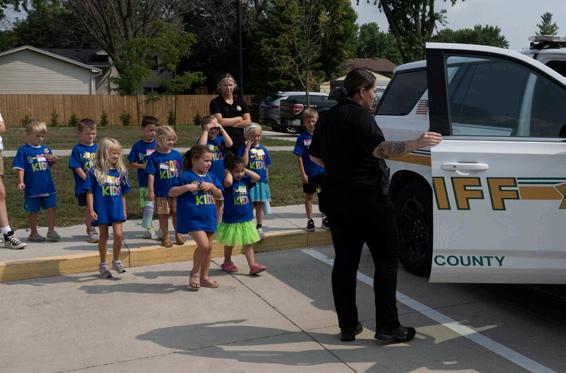
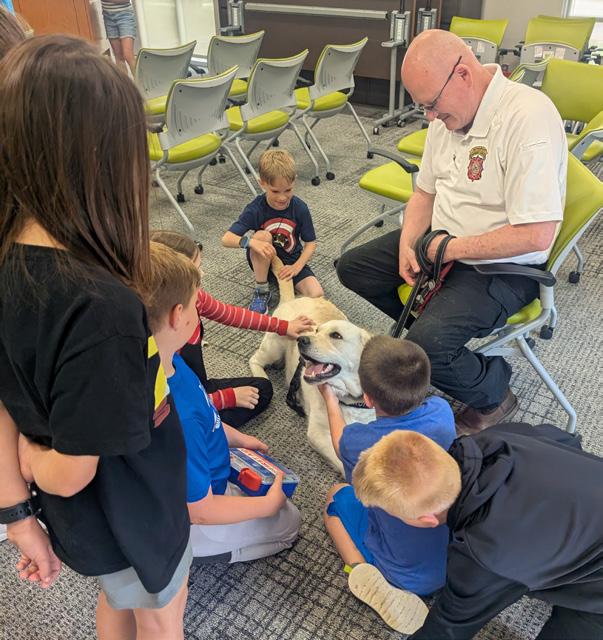
Bondurant is able to provide a wide range of services at little to no cost due to effective community partnerships. Each of the previously mentioned programs has a community sponsor, which reduces costs for the city and the community members. From other agencies such as the Polk County Sheriff’s Office, the Polk County Health Department, and the Emergency Services Department to local hospitals and universities to business partners and nonprofit organizations, each program is run with a partner organization. This ensures that the programs are run by subject matter experts, and it expands the reach of local government services through utilization of partner organizations’ networks.
The coordinated program demonstrates the central role of local government in improving community health and safety and ensuring residents are educated not only about city services, but also about keeping themselves and their families safe. Local government managers facilitated the numerous community organization partnerships and played a pivotal role in ensuring processes were streamlined so that bureaucracy did not bottleneck engagement.
The city government provided opportunities for residents to engage directly with local government personnel to foster trust and build relationships. The outreach helps community members see their local government as responsive, approachable, and invested in community well-being. Bondurant Safety Connecting created a cohesive approach to public health, wellness, and safety that has had an immediate impact on residents while also ensuring health and safety education is woven into the fabric of the community for years to come.
Elk Grove Village, Illinois, USA
Matthew Roan, Village Manager
David Dorn, Chief of Police
Telia DeSarno, Social Services Supervisor, Police Department



Reframing illegal drug use from a problem for law enforcement to a public health crisis that needs treatment and support led Elk Grove Village to develop the Elk Grove Village Cares program, the first community-based program of its kind in the Chicago area. This program serves anyone over the age of 12, regardless of residency, and not only includes access to treatment and support services, but also financial support for those who are uninsured or underinsured. Elk Grove Village Cares goes beyond the boundaries of the village to provide help when people need it and combat a crisis that reaches far beyond village limits.
The program, run by the police department, directs individuals with addiction to community services that can better assist them and meet long-term needs. This not only provides better services for those in need but also directs them away from jails and courtrooms, freeing up space for serious crimes. It builds trust between the police and the community as they are seen as partners and not just law enforcement. The police-assisted deflection program addresses the root cause of the criminal behavior—substance abuse—which leads to better outcomes for individuals, families, and the community as a whole.
Funded nearly completely by state and federal grants, the Elk Grove Village Cares program also removes financial obstacles to treatment. The program is available to anyone who contacts the police department to ask for help, regardless of ability to pay, and those asking for help will not face arrest. The village partners with community-based care centers and foundations to connect those seeking treatment with proper care and support. All police officers are trained on the program, and no one is turned away.
The partner organizations offer a wide variety of services, including inpatient and outpatient care, transitional housing,
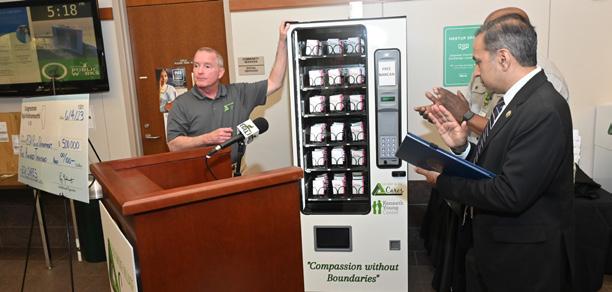
medication-assisted treatment, counseling, detoxification, case management, behavioral health screenings, and diagnostic evaluations. In addition to the treatment options, the program also covers transportation to and from the treatment centers to ensure barrier-free access to recovery. This holistic approach provides measurable progress toward fighting the public health crisis.


While many programs exist for adults, Elk Grove Village Cares also includes adolescents, which helps to treat addiction before adulthood, keeps kids in school, and reduces the likelihood of criminal behavior. As a final part of this program, the village installed a free Narcan dispensing machine and prescription drug collection box to fight overdoses and encourage proper disposal of unneeded medications.
In the first five and a half years of the program, Elk Grove Village Cares has made 383 connections to treatment providers. The Narcan dispenser was added in June 2023, and the free kits led to 17 overdose reversals in the first 18 months of their use.
The community-based initiative brought together numerous stakeholders, and the police department has been able to build and maintain these strong relationships to keep the program in operation. Acting quickly when someone needs help is key to success, and having trusted, reliable treatment partners allows this to happen easily. The program’s success has been recognized by multiple state and federal agencies and showcases the importance of local government managers in community health and safety. Ultimately, the availability of these resources leads to a safer, healthier community for all.
William Bowman Ferguson, ICMA-CM, City Manager
Wanda S. Page, Retired City Manager


As part of improving community safety and well-being, the city of Durham wanted to better understand why calls to emergency services were made. To do this, the city formed a coalition with other cities in North Carolina to research emergency service (9-1-1) calls. As a result of the research, the city discovered that limited options for call sorting led to increased calls for law enforcement when, in fact, law enforcement was not the appropriate response team. The city needed to go beyond the traditional options of police, fire, and emergency medical services to meet community needs. Creating a fourth option would allow for requests for behavioral health, unmet needs of unhoused persons, and other quality-of-life concerns to be addressed by professionals trained to meet these needs.
The creation of the Durham Community Safety Department (DCSD) sought to meet these needs. Situated within the public safety portfolio, the DCSD took on the challenge of meeting the needs identified through the research study. To do this, they created the Holistic Empathetic Assistance Response Teams (HEART). The HEART program was built on four main principles: community input, cross agency collaboration, data analysis, and field evidence.
To ensure the HEART program accurately met community needs, the DCSD conducted several town halls and in-person workshops to involve community members in program design. As the program is multifaceted, several agencies and community services were involved in the planning. From behavioral health providers to public safety to schools of social work, DCSD brought all stakeholders together to ensure the best possible outcomes. While all of this work was taking place, 9-1-1 calls were still being analyzed to continue to determine volume and assess program needs. As this is an emerging field, DCSD also looked at other successful programs throughout the United States to ensure best practices were taken into consideration.
As a result of the program planning, four main areas were developed under the HEART program—Crisis Call Diversion, Community Response Teams, Co-Response Programs, and Care Navigation. These four programs ensured that those who needed assistance through the HEART program were able to obtain care on the phone, in person, with a public safety professional if needed, and follow-up care to navigate complex health systems and ensure stability after initial assistance was provided.
At the initial launch, the program had 20 staff members and was available five days a week for eight hours per day. The one-year pilot showed so much success that the program was expanded to 50 staff members, which increased availability to seven days a week for twelve hours per day. Since its launch, the program has responded to over 32,000 calls for service and has needed law enforcement support on 0.02% of the calls. HEART team responses saved law enforcement over 10,000 hours of response time, allowing them to respond to violent crime and improve multiple aspects of community safety. Having HEART responders on scene is also associated with lower arrest rates, fewer hospital transfers, and higher rates of transport to community-based services compared with traditional law enforcement response.
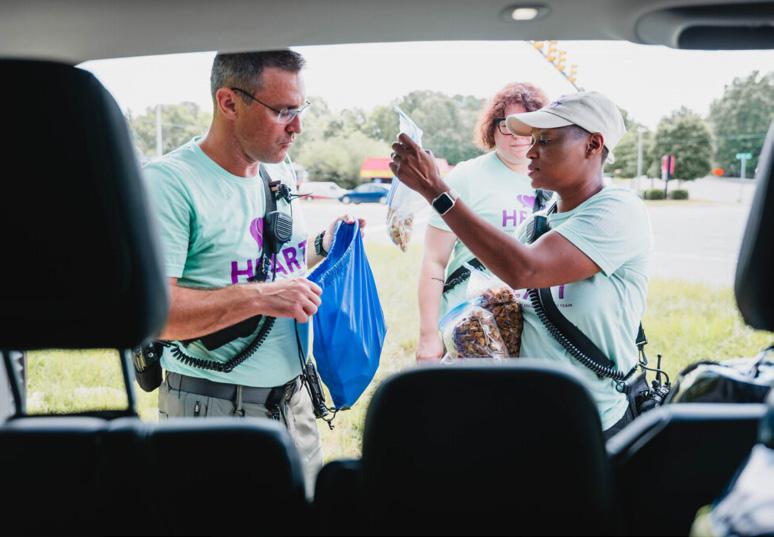
The HEART program has generated many best practices and DCSD has actively supported more than 60 jurisdictions interested in learning from Durham’s success. The HEART program demonstrates that alternative responses can be safe, community response programs can co-exist and collaborate with law enforcement, 9-1-1 integration is crucial, and data can tell a powerful story. The HEART program has received national attention from many associations, nonprofits, and philanthropic organizations, as well as media and state and federal agencies. The program’s success shows that a little HEART can go a long way.
Estes Park, Colorado, USA
Travis Machalek, ICMA-CM, Town Administrator
Lorenda Volker, County Manager of Larimer County
Jason Damweber, Deputy Town Adminstrator



The town of Estes Park, Colorado—in partnership with its local marketing district, Visit Estes Park, the Estes Park Housing Authority, and the surrounding Larimer County—joined in a collaborative and innovative effort to successfully pass Ballot Measure 6E, a lodging tax extension for workforce housing and childcare.
Significant challenges related to workforce housing and childcare have long been a persistent issue in the Estes Valley. Its geography, while notably scenic, leaves the Estes Valley isolated from other neighboring communities and makes its economy heavily dependent on tourists and town visitors. These conditions spur additional obstacles related to staff recruitment and retention rates. The Estes Valley has faced financial constraints and other difficulties while attempting to manage the consequences felt by its community due to challenges with infant care, affordable housing, and more.
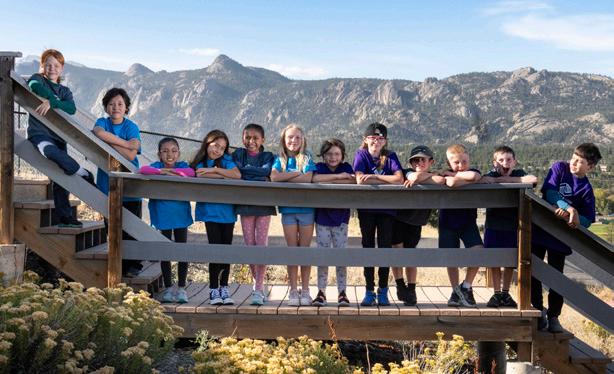

The passing of state legislature House Bill 22-1117 in 2022 allowed local marketing districts to use revenue received through lodging taxes to address housing and childcare issues in Colorado. This legislation acknowledged the shared challenges of housing affordability and childcare across the state, and its passing opened the door for the Estes Valley to capitalize on its unique efforts. The bill was actively supported by Estes Park as Jason Damweber, ICMA-CM, Estes Park deputy town administrator, testified before the state legislature alongside staff from Visit Estes Park. The parties encouraged the passage of the bill. This moment represented and facilitated the growth of a pivotal partnership; the participation of the valley’s local marketing district was critical in the process of levying the tax and passing House Bill 22-1117.
Welcomed into this partnership was the surrounding Larimer County as a necessary partner also committed to working together so that the community of Estes Park may feel the effects of the new legislation back home. Much work was to be done, beginning with the assembling of a task force that encompassed representation from each partner as well as other key stakeholders in the community representing a variety of interests. The efforts undertaken by the Lodging Tax Extension Task Force resulted in the recommendations of asking voters within the local marketing district boundaries for an increased lodging tax to raise funds for local housing and childcare needs, using revenue raised to directly address housing and childcare challenges, and the granting responsibility of management of the collected funds by the local marketing district to the town of Estes Park.

With the intention to gain support for a local ballot measure, the partnership continued its unified approach and focused on increasing advocacy and education about the impact of the measure should it be successful. Outreach to the community was highly successful with the support of local groups such as the Estes Park Housing Authority, EVICS Family Resource Center, local businesses and nonprofits, various media outlets, childcare and healthcare providers, and many more. The strategic communications plan of Visit Estes Park allowed for a notably impactful marketing campaign that spotlighted key benefits of the ballot measure.
Ballot Measure 6E passed due to the dedicated efforts of the partnership and the mobilization of a passionate community. In 2024, $5.6 million was allocated to expanding workforce housing and childcare opportunities. Several hundred new housing units have been preserved or constructed to accommodate local employees. Workforce assistance initiatives have contributed to increased staff compensation and improved employee retention. Childcare support measures—including tuition assistance programs and the acquisition of a municipal childcare facility—have already produced positive results. These successful outcomes represent the power of community partnerships, collaboration, and innovation should local government leaders, individuals, community stakeholders, and residents come together in the name of creating meaningful change.

San Fernando, California, USA
Nick Kimball, Former City Manager
Kanika Kith, Interim City Manager/Deputy City Manager/ Economic Development



The city of San Fernando had to adjust to growing community challenges that were heightened by the COVID-19 pandemic.
With a city-wide rise in homelessness and food insecurity also came a struggle for residents, business owners, and entrepreneurs to access funding, technical assistance, and other social services. This became a defining moment for local government leaders to act in an inventive and pioneering way, and in December 2023, came the launch of San Fernando’s Business and Community Resource Center (BCRC).
Led by the deputy city manager and supported by the housing coordinator and social services coordinator, the BCRC is a community-driven approach to centralizing access to resources so that the local economy is strengthened and the impact of local nonprofits and organizations is maximized. At a minimal cost to the city, the BCRC provides a direct avenue for connection through intentional partnership. The center provides homelessness prevention, housing stability services, and business development support through a system that represents an innovative and sustainable model for building social and financial resilience.
In collaboration with Initiating Change in Our Neighborhoods Community Development Corporation (ICON CDC) and LA County Department of Economic Opportunity (LA DEO), the BCRC remains focused on supporting local businesses and promoting economic opportunity while operating. Other business support initiatives spearheaded by the BCRC include one-on-one consultation for guidance on

marketing, workforce development, and strategic planning. A partnership with the Center by Lendistry and International Economic Development Council (IEDC) led to the creation of a climate financing toolbox that guides local businesses toward adopting zero-emission technologies. Several grant-funded partnerships have allowed the BCRC to target food insecurity and homelessness. Food, hygiene kits, and transportation assistance are distributed daily to those in need in collaboration with the North Valley Caring Services (NVCS). Home Again Los Angeles (HALA) administers a homelessness prevention program that supports residents by providing motel vouchers, rental assistance, and case management services for struggling families. The Home Rehabilitation Grant Program by Habitat for Humanity LA offers free home modifications to support the needs of aging low-income homeowners in the area. These are all examples of organizations that, in partnership with the BCRC, have concretely impacted the lives of individuals and families for the better.
The BCRC has successfully assisted in facilitating the administration of business loans, helping local business owners achieve more stability. Entrepreneurs have been provided with business support services to set them up for success. Such is the case with graduates from BCRC’s Entrepreneurship Academy,
who leave with professional training, transferable skills, and business incentives to drive them forward. Several families have been matched to emergency eviction prevention resources.
BCRC’s engagement extends to educational initiatives and resource fairs. The Key to Housing Rights event was held in partnership with the office of the county supervisor, Lindsay Horvath, and the LA County Department of Consumer and Business Affairs. This event delivered crucial information on tenant rights, eviction prevention, and foreclosure mitigation. The BCRC hosted its first Family Resource Fair with more than 20 local organizations in attendance to connect with local households and residents and provide visibility of essential services. In addition, the center is growing its offering of workshops focused on financial literacy and mental health.
The BCRC has transformed service delivery while highlighting the power of cross-collaborative partnerships and showcasing the impact of proactive, direct, and creative local government leadership. By leveraging the work of local nonprofits and businesses—as well as county, state, and federal resources—it has increased accessibility to life-changing resources for the residents of San Fernando and created a model for long-term community empowerment, sustainability, and resilience.
San Antonio, Texas, USA
Erik J. Walsh, City Manager
Alejandra Lopez, Assistant City Manager
Michael Ramsey, Executive Director of Workforce Development



San Antonio is one of the largest and fastest-growing cities in the United States, and it grapples with some of the highest poverty rates in the state of Texas. The city has struggled with generational poverty for decades and has examined contributors to growing poverty rates such as discrepancies in income levels and unequal access to education. In 2020, during the height of the COVID-19 pandemic, San Antonio received national attention for mass unemployment rates and significant city-wide food and service needs. The pandemic exacerbated the already pressing economic divide between the city’s residents. Many residents struggled to feed their families, and the situation was dire. In response to the distressing challenges facing their community, city officials—led by Mayor Ron Nirenburg, City Manager Erik Walsh, and Assistant City Manager Alex Lopez—created the San Antonio Ready to Work Program.
A ballot measure was drafted that came to be known as Proposition B. This proposition suggested the implementation of a 1/8 cent sales tax to support educational attainment and job placement for members of the San Antonio community. With a majority approval vote, the measure passed and allowed for the creation of this unique program. Over 200 million dollars were estimated to be directed toward this newfound program due to the passing of the measure. The program aimed to supplement and support existing programs in the city.


The management of the program after the passing of the ballot measure took commitment, time, and effort so that the lives of residents and families could be directly and positively affected. In the first six months of the program’s launch, mass interest from residents overwhelmed the early system and revealed gaps in technological and staffing support. Many significant steps needed to be taken, including improved system management, proper staffing measures, and the procurement of contractors. The program’s process flow expanded and allowed for more efficient service delivery after two to three years of continued development. The program expanded to support childcare for participants who needed caretaking assistance, the creation of an education training catalog, and a job board for matching program graduates with concrete employment opportunities. In its third year of operation, the program has enrolled more than 10,000 participants. In 2025, a six-million-dollar award was granted to support the hiring and training of San Antonians participating in the program, and the program has repeatedly been recognized by national organizations and institutions for its contributions.
By investing in a resident’s individual quality of life, the Ready to Work program invests in the city’s larger economic ecosystem. In partnership with local employers, it works to best identify the needs of the local workforce and aligns its educational programs accordingly. Over 500 local employers have committed to hiring graduates of the program in high-growth sectors such as manufacturing, healthcare, information technology, hospitality, and more.
The development and success of San Antonio’s Ready to Work Program reflects the importance of coordinated efforts between local government managers, community stakeholders, and residents. A joint commitment to ongoing collaboration has directly addressed a major historical challenge and drastically changed the lives of thousands of individuals.
Jersey Village, Texas, USA
Austin A. Bleess, ICMA-CM, City Manager
Robert Basford, Assistant City Manager


Located in west central Harris County, Texas, the city of Jersey Village, along with the Harris County Flood Control District, has undertaken mitigation initiatives to address the growing concern of flood damage across its neighborhoods. Major flooding events over the last two decades have caused significant destruction. Flood damage from severe weather events has continued to affect neighborhoods despite ongoing efforts, and in response, the Jersey Village Long-Term Flood Recovery Planning Study was initiated. This study produced four key recommendations, two of which merged to create a large-scale, effective flood mitigation project: the construction of a berm around Jersey Meadow Golf Course, along with drainage and street improvements in the Wall Street neighborhood.
This combined project required maximized funding efficiency and sought external funding sources from the start. With a total project cost of nearly $7,000,000, project funding came from the Federal Emergency Management Agency, the Texas Infrastructure Resiliency Fund, the Texas General Land Office, and the Jersey Village general fund. Austin Bleess, city manager, led the efforts to secure project grants, and in doing so, prevented major financial costs for taxpayers and residents.
The Wall Street neighborhood and the wider community have experienced positive outcomes from the project. Not only has there been reduced direct flooding to neighborhood homes, but improved stormwater retention within the berm has contributed to an overall reduction of street and home flooding. Where previous flood events forced street closures for long periods of time, accessibility to residents and emergency services has drastically improved.
This project offers several key lessons for local government managers facing similar community challenges. These lessons are also transferable across city-led projects.
Integrating mitigation strategies. This project demonstrated how tactical integration of several mitigation strategies into a single project plan led to a maximization of effectiveness and impact while streamlining funding and optimizing results.



For this project to succeed financially, Jersey Village actively sought external sources of funding through state and federal grants. This strategy not only enabled the project to begin quickly and efficiently, but lessened the financial burden for local taxpayers and demonstrated the effectiveness of the pursuit of grant opportunities.
Cross-collaboration and partnership. Jersey Village worked closely with multiple levels of government and private entities to see the project through. These partnerships leveraged the resources of various experts to align and enhance the project’s feasibility, implementation, and long-term impact.
Innovative leadership. This project had to be strategically led to expand upon existing flood mitigation efforts and implement a new infrastructure model. Jersey Village worked closely with expert engineers to develop a plan that maintains local recreational spaces while targeting water detention. This led to the creative integration of the local golf course as a flood mitigation tool.
Community engagement. This project would not have been successful without the support and mobilization of the larger community and the residents directly impacted by severe weather conditions. Large-scale infrastructure projects require community engagement to ensure that residents’ needs are met and to build trust and transparency with the public.
The role of local government managers is critical in properly identifying community challenges. By channeling creativity, problem solving, and proactive critical thinking, local government managers can implement sustainable solutions that drastically improve the safety and prosperity of residents’ lives.
Pinecrest, Florida, USA
Yocelyn Galiano, ICMA-CM, Village Manager

Situated in Miami-Dade County, Florida, an area known for its sandy beaches, cultural attractions, and unique wildlife, lies the village of Pinecrest. In recent years, significant environmental challenges have drastically impacted its community.
The landfill crisis: Overflowing landfills are a significant problem facing Miami-Dade County. Its two landfills are projected to reach capacity by 2029, and excessive food waste accounts for a large portion of landfill volume, also increasing methane emissions into the atmosphere.
Water pollution: Pinecrest’s urban waterways—as well as the neighboring Biscayne Bay, an aquatic preserve for marine life—have sustained significant changes due to increased pollution and the spread of invasive species. Not only is native aquatic life at risk, but water quality is also declining.
Soil degradation: An increase in nutrient runoff and pollution has led to severe soil degradation in the Everglades. This directly affects Pinecrest as it is susceptible to severe weather conditions that can be extremely damaging, such as flooding.
The composting program: The pressing environmental challenges required swift, innovative action from leadership. Several projects were launched by Pinecrest, including the first free composting program in Miami-Dade County, spearheaded by Councilmember Shannon del Prado. The program established a
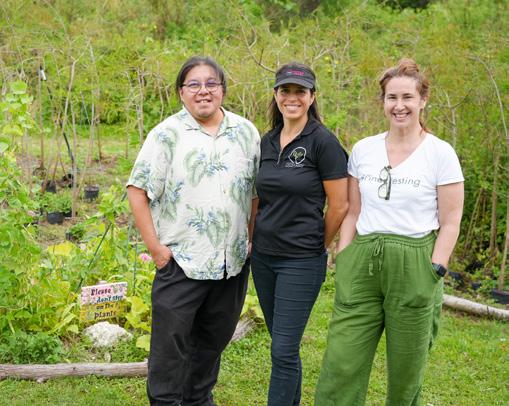

user-friendly network, allowing residents to conveniently drop off food scraps at designated sites throughout the village. Additionally, Pinecrest distributes complimentary composting bins at its weekly farmers market every Sunday, making sustainable living more accessible to residents. Key outcomes from the composting program include the diversion of organic waste from landfills, the promotion of soil health, and the reduction of carbon emissions.
Everglades Earth Cycle Project: In collaboration with the Miccosukee Tribe of Indians of Florida; Dr. Lanette Sobel, founder of Fertile Earth Worm Farm; and the Love the Everglades Movement, the Everglades Earth Cycle converts organic waste into nutrient-rich compost, strengthening the soil in the Everglades, one of the world’s most vital carbon sinks.
Floating Flower Islands Initiative: Building on success and community support, Pinecrest introduced a third sustainability
project. This distributed 500-square-foot floating plant platforms across urban waterways, improving water quality, mitigating the growth of invasive species, and enhancing aesthetic appeal through the installation of vibrant flowers by the local organization Green Thumb Strategies.
Results. In just one year, the composting program successfully reduced greenhouse gas emissions and landfill contributions, diverting over 90,000 pounds of food waste from landfills. All three projects have helped restore the Everglades and promote climate resiliency.
Funding expansion. The composting program began with a local pilot budget and the support of Miami-Dade County, while grant funding from the U.S. Department of Agriculture supported the launch of the Everglades Earth Cycle Project. This combined approach enabled project scaling and lessened the financial impact on taxpayers.
Community engagement. The participation of residents across the community is vital to the success of Pinecrest’s sustainability efforts. Grassroots support has made sustainability a community priority; it was a resident who approached Councilmember del Prado with the idea of a composting program.
Cross-collaborative partnership. The composting program spurred an interconnected environmental strategy, leveraging the work of local organizations through strategic partnerships.
Pinecrest’s sustainability efforts demonstrate the effectiveness of proactive and responsive local government leadership. The municipality is recognized for its sustainable practices and serves as an example of how local governments can positively address environmental issues.

Valmarie H. Turner, ICMA-CM, City Manager
Angela O’Brien, Deputy City Manager
Sam
Roman, Deputy City Manager



Staff of the city of Roanoke have faced an ongoing challenge of standardizing an approach to sustainability across operations, the work of private and civic organization projects, and general outreach to the public. In response, employees from parks and recreation and the office of sustainability, alongside various community partners, came together in a shared effort to creatively expand sustainability practices.
Introduced to city staff by two community residents from a local garden club, Bee City USA is an initiative of the Xerces Society of Invertebrate Conservation, which engages communities across the United States in pollinator conversation efforts. Several preparatory steps had to be taken for Bee City USA to successfully take off in Roanoke. Specific program criteria had to be met, such as establishing a standing Bee City USA committee, increasing native plant abundance and adding nest sites across public and private land, and incorporating pollinatorconscious practices into city policies and plans.
A synergetic partnership formed among organizations and individuals across the city. Mill Mountain Garden Club and Roanoke Valley Garden Club helped lead the efforts, mobilizing the support of residents and city staff so that Bee City USA criteria were met. In fall 2023, the Bee City USA designation was officially granted. This was recognized at a Bee City USA kickoff event, bringing together many residents in celebration of the accomplishment, but the work was only just beginning.
The Bee City USA designation is a commitment to actively continuing and advancing conservation efforts. The parks and recreation department adopted an Integrated Pest Management plan to reduce pesticide use in Roanoke parks. The community continued to participate in sustainable projects that yielded successful results. A notable example of this is the Melrose Pollinator Garden created by the Roanoke Valley Kiwanis Club, covering more than 3,000 square feet and planted exclusively with native species. The ongoing impact of the Bee City USA designation is reflected in upcoming city construction and renovation projects as well.
Various lessons can be learned from the implementation of this type of community project.
Channeling public enthusiasm. An astounding takeaway from the development of Bee City USA in Roanoke is the


dedicated public enthusiasm, support, and participation in growing the project’s objectives. This is exemplified through the small pollinator habitats that were created in the very own backyard gardens of residents.
The power of partnership. Much of the success of this project can be credited to the growth in relationships between local government officials, residents, and community stakeholders who share similar goals. Through the contributions of organizations like the Mill Mountain Garden Club and the Roanoke Valley Garden Club, city staff have directly helped Roanoke’s sustainability efforts grow.
Education and outreach. One area of project success is the growth of educational and outreach opportunities throughout the community. From participation in external festivals and events to the expansion of the city’s own pollinator-focused programs, education around pollinator conversation efforts has expanded tremendously.
Roanoke’s effective implementation of Bee City USA reflects the significant roles played by individuals and organizations throughout the community and the positive impact generated from a committed effort between that community and its dedicated local government managers.
Jersey Village, Texas, USA
Austin A. Bleess, ICMA-CM
Robert Basford, Assistant City Manager
Laura Capps, Human Resource Manager



Employee engagement is a cornerstone of excellent service delivery. Local government employees who are more engaged at work provide better community services and foster innovation within the workplace. Jersey Village experienced this firsthand during its Employee Engagement Journey. When the project started, employee engagement was at a low point and many staff members felt disconnected, lacked a clear sense of purpose, and faced ineffective communication, which made jobs more difficult. As a result, the city was faced with low staff morale, limited collaboration opportunities, and employee retention challenges.
Jersey Village leadership knew that something had to change, and the change needed to be actively demonstrated by senior leaders in order for full staff adoption to take place. After obtaining buy-in from leadership, the organization embarked on a full-scale culture change focused on employee engagement and workplace environment enhancement. A vision for the new Jersey Village was established and engagement initiatives such as training, team building, and an employee engagement committee were developed to meet the vision. Promoting transparency and continuous improvement allowed for successful deployment of the initiatives as employees were able to provide feedback in real time and see their concerns addressed and suggestions implemented.
Work-life balance and well-being initiatives such as flexible schedules, wellness challenges, and mental health resources were made available to employees to allow them to meet both personal needs and professional responsibilities. Ultimately, this allowed for a healthier workplace, which increased job satisfaction. Finally, the city implemented a recognition program that acknowledged employee contributions and contributed to a sense of belonging.
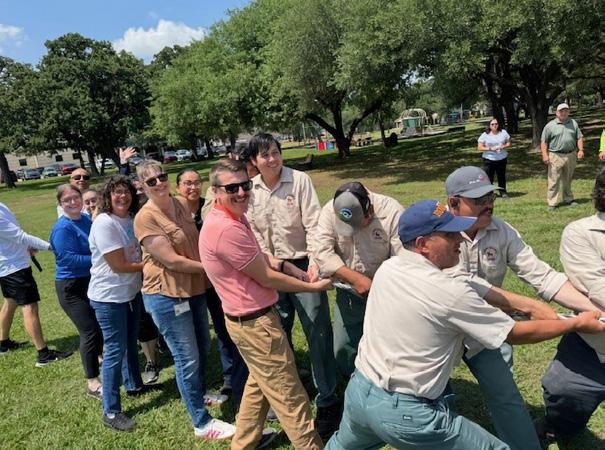
The results of these initiatives are significant. Not only was there a noticeable shift in organizational culture and workplace satisfaction, but the employee engagement category rose to 81% satisfaction in 2024, which was an increase over previous surveys and exceeded other local governments in the area. The consistent participation in engagement programs created a sense of community among employees, which translated into higher retention rates, increased collaboration, and improved service delivery for residents.
Jersey Village received a Top Workplace Award from the Houston Chronicle in 2022 and 2024. The recognition showcased the city’s work to the broader community and served as a testament to the effectiveness of the Employee Engagement Journey.
Jersey Village’s program is a success due to its strategic approach. With the whole organization adapting to the new way of work and the new initiatives implemented, the strategy is set up to be sustainable and effective now and in the future. These sustained efforts must become part of the organization and not act simply as one-time initiatives used as a quick solution to a larger program. The culture change must be continuously reinforced. The city’s success demonstrates that strategic leadership in governance extends beyond policy implementation. It involves creating an environment where employees thrive, which ultimately leads to a high-performing organization that provides effective and responsive government services for all.
Burr Ridge, Illinois, USA
Evan
Walter, ICMA-CM, Village Administrator

Evan
One of the keys to a successful local government is engaged and enthusiastic employees. Facing pressures to deliver financial value, solve increasingly complex issues, and manage the growing scope of local government services, the village of Burr Ridge found that it had an employee engagement problem. In 2022, the village conducted an employee survey, and responses indicated that employees felt they were not involved in critical decision-making processes and that internal communication could be improved. Burr Ridge realized that a significant change in organizational processes and employee engagement would need to be made to realize the full potential of its employees and provide the best services possible to the community.
The employee engagement committee (EEC) was developed in December 2022 with one goal: “for Burr Ridge to become the best place to work in local government, period.” Uniting around one goal allowed for team cohesion and dedication toward the same end product. The EEC’s structure contained several critical elements: encourage willing employees to participate and make suggestions on administrative matters, meet regularly to ensure that discussions never went stale, and have direct representation at the table to move the organization forward. In addition to the three-part structure, the EEC was granted a mandate to participate directly in the organizational development of the village through its combined management of the village’s safety and wellness programming. This gave nonsupervisory employees the power to make suggestions and changes that improve the workplace and are aligned with the ultimate goal of making Burr Ridge the best workplace.
In the last two years, the EEC has had numerous successes, including creating the village’s first-ever statement of culture with

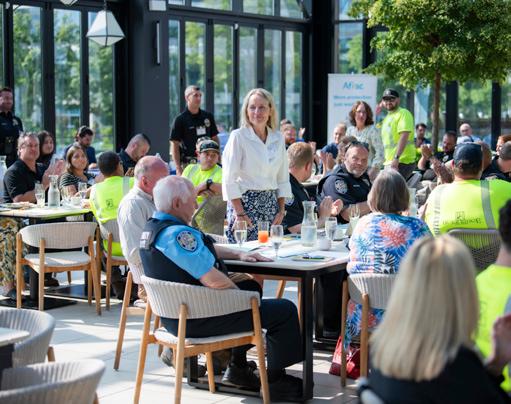
mission, vision, and values statements; making changes to health and wellness options; ensuring staff had access to an organizational coach to move professional development efforts beyond basic training; revising employee documents; and creating an employee recognition program.
Beyond these programmatic successes, the EEC produced significant communication-based changes to solve the original issue of poor internal communication. The EEC has greatly improved peer communication through a diverse composition of staff from both union and non-union and both part-time and full-time positions, and ensuring EEC members represent operational and administrative functions. The EEC has become a conduit for employee feedback, and members have become stewards of organizational health and cultural transformation. EEC members have developed perspectives on policy implementation and managerial decision-making and have become skilled change ambassadors. They can effectively communicate the possibilities and challenges of proposed initiatives to their peers, ensuring that all staff are aware of organizational changes. The commitment to peer-to-peer leadership has transformed the organization’s culture in ways that were impossible with the previous hierarchical approach.
Humans ultimately provide local government for humans, and investment in the village’s staff was critical to organizational success. Creation of the program required internal communication about its intent and organizational benefits. The foundational support and backing from leadership allowed the EEC to improve employee engagement and satisfaction, leading to overall organizational improvements. The EEC allows Burr Ridge to have access to the perspectives and talents of the 90% representing the nonmanagement workforce instead of relying only on the perspectives and expertise of the 10% in leadership roles. Allowing greater participation has led to innovation, creative problem solving, and a better workplace culture, and ultimately has led to return on mission for the EEC: Burr Ridge has become the best place to work in local government, period.
Charlotte County, Florida, USA
Hector Flores, County Administrator
Claire Jubb, Assistant County Administrator
Emily Lewis, Deputy County Administrator



Local government workforce recruitment and retention is a consistent challenge for organizations across the United States and around the world. Many positions remain unfilled due to a lack of qualified candidates or job-specific requirements that prevent interested potential candidates from applying or progressing through the interview stage. Charlotte County’s human resources department was one such local government agency facing these challenges. Many departments across the county government requested the requirements be lowered or changed to meet those of the applicant pool. While this was considered as a possible solution, Charlotte County developed a more robust recruitment and retention program that not only helped to fill open positions in the county, but also provided training and capacity building for community members.
The Strategically Targeted Talent Aligned for Retention (STTAR) initiative began as a pilot program in 2022. The goal of this program was to identify candidates who would be willing to work as STTAR employees and receive the on-the-job training that would prepare them to fill regular full-time or part-time positions that were sitting vacant. Departments throughout Charlotte County would participate in this program with the hope of retaining the STTAR employees.
The program serves as a temporary employment opportunity that allows applicants to receive pay and on-the-job training instead of needing to go to an outside agency to take classes using their own time and money. The county’s initiative helps remove financial and transportation barriers associated with career advancement with the end goal of creating longterm county employment opportunities.
The program includes six job classes: administrative support, maintenance specialist, equipment operator with commercial driver’s license, paraprofessional, professional, and trades technician. The human resources department created the program and developed its documentation, including an onboarding process designed specifically for the STTAR
employees. A dedicated staff position on the human resources team was created and the recruitment and hiring guide for this new pathway was distributed to managers and supervisors throughout the county.
From March 2022 through February 2025, the program involved more than 400 county employees and reduced time-to-fill metrics by creating a pool of trained candidates ready to fill open positions as they became available. This expanded the applicant pool and eased the recruitment process while providing practical training and career advancement opportunities for interested individuals. The STTAR program filled a gap in county employment needs while also improving access to jobs for residents.
The success of this program extends beyond Charlotte County. The STTAR program has showcased the county as an innovative employer looking to meet the needs of today’s workforce. Neighboring communities have demonstrated interest in this initiative and STTAR program participants have shared their knowledge and experiences with other jurisdictions to allow them to adopt their own programs. The STTAR program also serves as a mechanism for recruiting younger professionals to local government service as the program serves as a first entry point for county employment at many job fairs and local schools. The success of this program has led to a stronger Charlotte County workforce, which allows for improved service delivery and a stronger community as a whole.
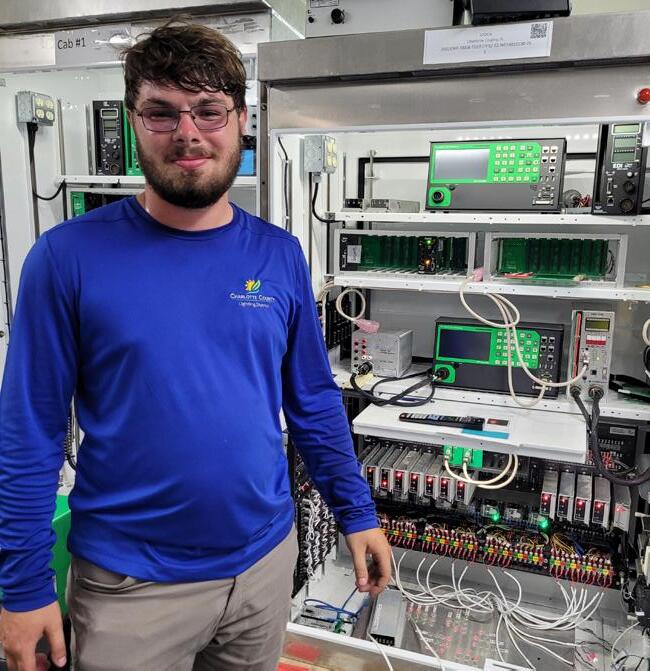
Karen Daly’s career spans more than 30 years of direct service in Texas and an additional seven years serving ICMA. Her commitment to developing, coaching, and mentoring competent, professional, and ethical city managers continues in her retirement, and she continues to support the next generation of city managers.
Daly began her career with the North Central Texas Council of Governments serving in various roles ranging from program manager to assistant to executive director. She then served as assistant to the city manager in Arlington, Texas, before becoming the assistant city manager in Longview, Texas. In Greenville, Texas, she held her first city manager role before transitioning to assistant city manager in Sugar Land, Texas, then becoming city manager in Hutto, Texas.

When she left direct local government service, her commitment to the profession still shone through as ICMA’s first Mountain Plains regional director and the first woman to become a regional director. Through this position, she expanded her mentorship and coaching abilities beyond the state of Texas into the Mountain Plains region and across the United States while providing ethics training and connections between the 14 states in ICMA’s largest geographical U.S. region. Daly furthered the profession in a volunteer capacity by serving on the board of directors for the Texas City Management Association (TCMA) and chartering the Texas Women Leading Government organization.
Throughout her tenure, Daly has been recognized for her commitment to mentorship for young professionals, as well as a coach and supportive colleague for all local government professionals. She created internship programs in many of her professional roles and has volunteered extensively to make the profession stronger. Additionally, she has used the knowledge gained from her extensive career to help others solve community challenges, advocate for themselves, and provide support during difficult situations. Daly’s reputation for making connections and developing networks has strengthened the careers of individual local government professionals as well as the profession itself.
While her professional contributions have been numerous, Daly’s most significant contribution is the work she has done to advance women in the profession. Daly’s efforts led to the creation of the first Women Leading Government group in Texas, which now includes four regional chapters. Her ability to create community has led to an extensive women’s network in Texas where members come together to support one another and grow together as leaders in local government. As a result of these networks, Daly developed the Texas Women’s Leadership Institute, which provides an annual cohort-based learning and professional development opportunity. With only 20 spaces available each year, the program is very competitive as women across the state want to learn from the best and participate in the amazing community that Daly has created. After seven years and more than 100 graduates, the pipeline and number of women becoming city managers in Texas is shifting in a positive direction. As a result of her work in women’s leadership in Texas, she is an advocate for other women’s leadership programs and helps leaders in other states develop their own networks and professional development experiences. She is a supporter of ICMA’s SheLeadsGov initiative, and has been recognized for her contributions by receiving life membership and a Collaboration Award from ICMA, as well as a Lifetime Achievement Award and City Manager of the Year Award from TCMA.
In nominating her for the Distinguished Service Award, her colleagues cite her commitment to furthering the profession; developing and supporting women; and being a trusted friend, advisor, and sounding board as reasons for the nomination. Daly’s career has involved not only direct local government service, but a true desire to bring people together, develop relationships, and provide space for the profession to grow now and in years to come. She continues to work for a time when women in the chief leadership role are not the first or only woman in the room.
With a career spanning 50 years, Ken Hampian is known for his commitment to ethics, good government, coaching, and positive community and council-staff relationships.
His local government career began in 1975, working for both the city and county of Fresno. In 1979, he was selected to the Presidential Management Fellowship program, taking a five-year detour to Washington, DC, during his federal service, where ICMA Executive Director Mark Keane was his formal mentor.
In 1984, Hampian returned to local government in the city manager’s office under David Mora, former ICMA president and 2017 Distinguished Service Award recipient. In 1989, he began a 20-year career with the city of San Luis Obispo (SLO), the first half as assistant city manager. In 1996, Hampian received the League of California Cities John S. Nail Award, which is presented annually to one assistant city manager. In 2000, he was appointed SLO city manager. He was recognized by city employees for outstanding performance, receiving the National Management Association Silver Knight of Management Award and Employee of the Year honors. He was very involved in and supported by the community.

Hampian received state and national recognition for his Bell service, including ICMA’s first Hall of Fame Ethics Award and PublicCEO’s City Employee of the Year. At a League of California Cities conference in 2025, the Bell city manager and various staff credited the community’s success to the foundation that Hampian helped to create more than a decade earlier.
Over the years, he has assisted several cities with community and council goal-setting, council teamwork, and city manager evaluation. He has trained in several related areas, along with a specialty in police leadership and police chief/city manager teamwork. Hampian created and taught a university graduate course on organizational leadership and co-authored Guide to Local Government Finance in California, which the League of Cities executive director called “…the most comprehensive treatment of local government finance that I have ever seen in any state.”
Through mentorship and coaching, he has helped countless colleagues and students, both formally and informally. For many years, he has served as a California coach and an ICMA coach. His nominators for this award noted that his advice was “always insightful and valuable.”
Throughout his career, Hampian was active in ICMA and the League of California Cities. He has authored many articles for PM and Western Cities magazines. His 2003 PM article, “Six Reasons to Work Through the City Manager,” is used by many cities in new councilmember orientations.
In 2010, he moved on from the relentless city manager life to focus on teaching, training, coaching, and other forms of service, until briefly becoming a city manager again. After an explosive scandal in working-class Bell, California, burst onto the national scene, councilmembers were recalled, high-level staff fired, and prosecutions launched. By the summer of 2011, the city was struggling, unable to attract even a single interim city manager application. With support from ICMA and the League of California Cites, he volunteered to serve as the Bell city manager pro bono until a long-term interim manager could be found.
Hampian’s career is a true testament to the importance of ethics, good governance, mentorship, and coaching in local government.
Valerie A. Lemmie
Senior Advisor for State and Local Government, Kettering Foundation
Valerie Lemmie has led a long career in public service, combining her experience in community and civic engagement with forward-thinking principles and a spirit of innovation. She began her career working in urban affairs in Kansas City, Missouri, and continued through various local government positions, eventually serving as city manager for Petersburg, Virginia; Dayton, Ohio; and Cincinnati, Ohio. Today, she works as the senior advisor for state and local government at the Kettering Foundation, where she has also served as the director of exploratory research.
Lemmie’s local government career exemplifies her ability to not only serve the local government directly but the profession as a whole. At the Kettering Foundation, she holds an annual summit for local government professionals to reflect and refine their work and address the “wicked problems” of local government service. Her work emphasizes co-production with the public and ensuring deep listening and equity are core values of service. The programs she created, like the annual summit, have served as learning labs for city managers and have resulted in research publications that reach far beyond the experience of those who attended the events.

Her work has been recognized throughout numerous research and speaking engagements that have brought her ideas to life throughout the local government community and have reached far beyond those who know her personally. She brings an international lens to her work and is able to effectively translate insights from American local governance into lessons adaptable to global contexts. Her commitment to public service and the local government profession transcends borders.
Beyond these professional contributions, Lemmie has served as a mentor and confidant to many in local government. In nominating her, nominators note that “her wisdom is matched by her generosity of spirit. She challenges us to think deeply about the purpose and potential of our work and reminds us of the privilege it is to serve.” Her contributions reach beyond the individual professional and allow others in local government to think differently and challenge themselves to be better professionals.
Her tenure as city manager in Cincinnati still lives on in today’s local government workforce as her community engagement and stakeholder negotiation process resulted in the signing and implementation of historic agreements with residents and the Department of Justice to improve policecommunity relations through changes in policies, procedures, and practices. These agreements instituted a community problem-oriented policing approach in city neighborhoods.
Outside of her work for the Kettering Foundation and direct local government service, Lemmie has served in teaching roles at Howard University, the University of Dayton, and Nelson Mandela University (South Africa), providing the next generation of local government leaders with the knowledge, skills, and abilities to lead the profession into the future.
Secretariat, Georgia City/County Management Association
Peggy Merriss has served the local government profession for more than 40 years and continues to do so. Her career has been highlighted by the development of leadership programs, and she is known for creating a culture of innovation.
Prior to her service as secretariat for the Georgia City/County Management Association, she spent the majority of her career with the city of Decatur, Georgia. She served as employment services officer, personnel director, assistant to the city manager, and assistant city manager before being appointed to the city manager role, which she held for 25 years. She later served as the interim city manager for the cities of Sandy Springs and Pine Lake in Georgia.
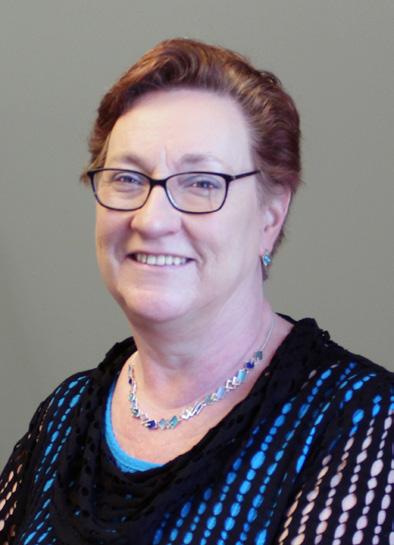
Her time in Decatur was transformational for the city as well as for the staff who worked there. Under her leadership, the city’s management team created a culture of innovation from within. Her leadership transformed the way the city thought about community engagement and ethics and transformed their use of storytelling. Her commitment to thinking differently allowed the city staff to redesign their budget process to tell a story about the community and incorporated an element of fun into the recruitment process.
Merriss’s commitment to ethics shone through in Decatur where she incorporated ethics into management team meetings and discussions with elected officials, and she even crafted an ethics ordinance, which led to the appointment of an ethics board to review complaints. The foundation she created endures in the organization today.
Her commitment to developing young professionals is exemplified through her support of ICMA’s Local Government Management Fellowship (LGMF) and her desire to hire interns long before the LGMF program began. As one LGMF participant notes, “Ms. Merriss’s dedication extends beyond her own endeavors; she is a connector, building bridges and fostering a strong sense of community. Her passion for excellence is contagious, and her influence is profound.”
Outside of her work in Decatur, she was committed to leadership development programs. Merriss was one of the founding members of the Athenian Program, which brought together local government leaders from around the country to meet and renew their energy and passion for public service while also thinking about the legacy they wanted to leave in their communities and in the profession.
In 2025, she was part of the team that created the Women in the Civic Arena retreat, which provided space for women in local government to develop strategies to succeed and achieve personal goals in addition to professional ones.
While she is known for developing leadership programs for others, she never stopped developing her own leadership skills as well. This is evidenced through her continued commitment to giving back to the profession. She served as an ICMA Southeast Regional vice president, she was the first woman to serve as chair of the ICMA-RC board, and she was the first woman and youngest person to serve as ICMA president.
She was able to give back to the profession as a whole and expanded her reach well beyond the city of Decatur and the state of Georgia. As her nominator said, “Peggy Merriss’s career exemplifies the values and principles of the ICMA Distinguished Service Award. Her outstanding leadership, innovative programs, mentorship of young leaders, and contributions to regional, state, and national management organizations make her a deserving candidate for this prestigious honor. She leaves an indelible mark on the city of Decatur and on the broader local government community, and her legacy continues to inspire public servants across the country.”
John F. Shirey
John Shirey’s career has spanned four decades of achievement, serving and leading government agencies and nonprofit organizations in California, Ohio, and Washington, D.C. As a practitioner, leader, educator, advocate, and mentor, he has made significant contributions to the local government profession.
He began his career in the city manager’s office in Monterey Park, California, before moving to Long Beach, California, to be a legislative analyst, followed by a promotion to director of intergovernmental relations. From that position, he moved to Washington, DC, to represent the nation’s cities as legislative counsel for the National League of Cities. He later went to Los Angeles County where he rose to be the assistant chief administrative officer. In 1987, he returned to the city of Long Beach to become assistant city manager, and soon after was appointed to his first city manager role in Cincinnati, Ohio, in 1993. After more than eight years, he returned to California in 2002, taking the position of executive director of the California Redevelopment Association before becoming the city manager of Sacramento, California, where he later retired in 2016.
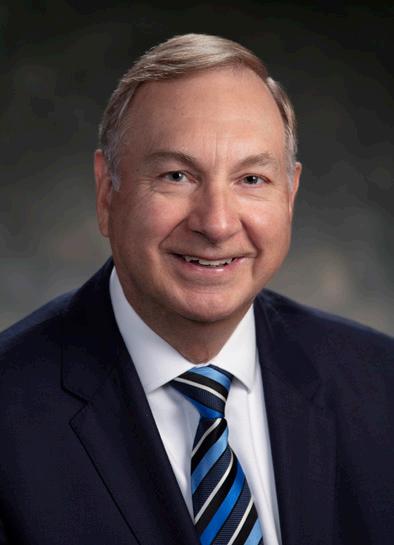
While his direct service work is notable, it’s his work outside of his day-to-day duties that has made a significant impact on the profession. He has influenced many local government professionals through his demonstrated commitment to ethics, presentations at conferences, and teaching graduate courses in public administration.
He has been a long-time mentor to local government professionals through his guidance of Long Beach’s Management Assistant program, which has produced many local government professionals. Although he is now retired, he still coaches individuals through ICMA’s Coach Connect program and the American Society for Public Administration (ASPA) fellows program.
In Cincinnati, he focused on improving services and completing large infrastructure projects while providing visionary oversight for the central riverfront master plan, which led to the development of two sports stadiums, a museum, a public park, and mixed-use development. Essential to the success of the plan was his oversight of reconstruction of a segment of interstate highway that bifurcated downtown Cincinnati. Completion of that project resulted in a safer highway, significant beautification of the riverfront area, a multimodal transit center, and the reuse of 15 acres of land.
When he became city manager in Sacramento, he not only created a plan to develop an entertainment and sports arena downtown, which secured the city’s NBA franchise, but he protected the council-manager form of government when opposing interests attempted to create a strong mayor system. Additionally, he showed great leadership in closing deficits in the city’s budget, restoring services, rebuilding the reserve funds, undertaking extensive upgrades in the water and sewer systems, and developing a strong management team while fostering a culture of transparency and accountability.
Shirey has dedicated his life to the betterment of local government and strives to make the profession more respected by all. To achieve this, he served on many ICMA and ASPA committees and task forces. One of his most notable volunteer service experiences was his six-year service as chair of the steering committee of the Performance Measurement Consortium. During his tenure, ICMA collaborated with a pilot consortium of 44 local governments to create the first national uniform performance measures for quality services that were used by cities and counties throughout the United States. Shirey’s leadership helped ICMA create the Center for Performance Measurement, which is the basis of the continued benchmarking and data collection work still in progress today.
His honors include the ICMA Credentialed Manager designation, his appointment as a Fellow at the National Academy of Public Administration, and receiving the National Public Service Award.
Outside of his professional duties, John has been a Certified Master Official with USA Track & Field for 52 years and has officiated numerous U.S. Olympic trials, national championships, and the 1996 Summer Olympic Games. He was inducted into the National Officials Hall of Fame in 2019.
John Shirey’s career has made a lasting impact on the profession, and his achievements are a testament to his commitment to excellence in city management and his unwavering belief in the value of public service.
In recognition of these ICMA members’ years of public service, they will be presented awards in 2025.
55-Year SERVICE AWARD RECIPIENTS
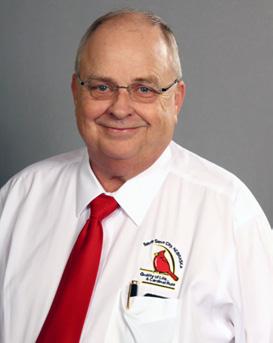
Lance A. Hedquist has served nearly his entire career as the city administrator of South Sioux City, Nebraska, where he has been in the role since 1980. Prior to this role, he was assistant director at Siouxland Interstate Metropolitan Planning Council (1970-1980).
Scott C. McElree, borough manager, Quakertown, Pennsylvania, has served in this role since 1997. Prior to his appointment as borough manager, he served as the chief of police for Quakertown, Pennsylvania (2004-2007) after 29 years as a police officer in Whitemarsh Township, Pennsylvania (1975-2004).
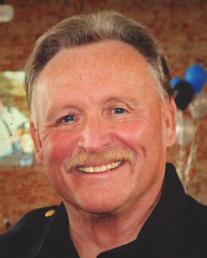
Randall H. Reid, southeast regional director, ICMA, has served in this role since 2014 after a long career in local government. He was previously county administrator in Sarasota County, Florida (2012-2013); county manager in Alachua County, Florida (1999-2012); and deputy county administrator (1997-1999) and assistant county administrator (1994-1997) in Martin County, Florida. Prior to these county leadership roles, he served as city manager of Titusville, Florida (1987-1994); city administrator in Green River, Wyoming (1981-1987); and several roles in Vandalia, Ohio including assistant city manager (1980-1981), administrative assistant (1976-1979), and intern (1973-1975).
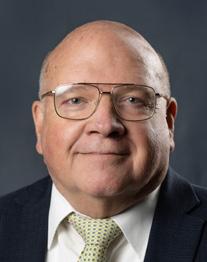
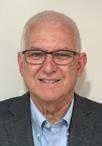
Michael J. Bobinsky, director of public works/ utilities, Somersworth, New Hampshire, also served as the director of public works for Portland, Maine (2003-2015) and deputy city manager in Draper, Utah (1999-2002). He was also community services director for Dover, New Hampshire (1994-1999) and public works director in Concord, New Hampshire (1989-1994). He began his career in Greely, Colorado, where he served as personnel specialist (1980-1981), administrative assistant to public works (1981-1984), and general services manager (1984-1989).

Barry Cook, city administrator, Cody, Wyoming, also served as city administrator for Green River, Wyoming (1994-2012) and Post Falls, Idaho (1991-1993). He held positions of town administrator/ clerk/treasurer (1986-1991) and administrative assistant (1985-1986) in Wheatland, Wyoming, as well as the position of executive director/circuit rider administrator in Fremont Cog, Wyoming (1980-1985). He also served as administrative intern in Sausalito, California (1979-1980) and administrative aid in San Francisco, California (1979).
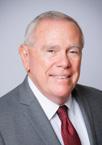
Gregory L. Dunham, town manager, Gulf Stream, Florida, served as town manager in Kenly, North Carolina (20112017); Manalapan, Florida (2002-2010); and Ocean Ridge, Florida (1998-2002). He held the position of assistant city manager in Palm Beach Gardens, Florida (1994-1998) and Addison, Texas (1983-1991). He served as city administrator (1983) and assistant city manager (1982-1983) in Bowie, Texas, after four years as a police officer (1978-1982) in Denton, Texas.

Ronald M. Ferris, city manager, Palm Beach Gardens, Florida, previously worked for Lantana, Florida, as the town manager (1990-2000) and the operations director (1987-1990). Prior to this service, he was the parks and recreation director of North Lauderdale, Florida (1983-1987) and Lee County, North Carolina (1980-1983).

Thomas Fountaine II, ICMA-CM, borough manager, State College, Pennsylvania, previously served as borough manager in Hollidaysburg, Pennsylvania (1985-2003) and administrative assistant in Bedford, Indiana (1980-1985).

city manager, Mountain Brook, Alabama, previously served as the city manager of Powder Springs, Georgia (1992-1993); the assistant city manager/planning director of Anniston, Alabama (1987-1992); assistant to the city administrator/planning director in Gulf Shores, Alabama (1984-1987); city planner in Decatur, Alabama (1981-1984); and city clerk in Russellville, Alabama (1980).

manager in Imperial Beach, California (1994-1996); city manager in Soledad, California (1991-1994); and assistant city manager in Coalinga, California (19881991). Prior to these roles, he was assistant public works director (1985-1988) and redevelopment specialist (1983-1985) in Eureka, California, and area development officer (1980-1983) for Inter-Tribal County in California.

Anthony P. Mercantante, township administrator, Middletown, New Jersey, previously served as planning director, Middletown Township, New Jersey (1989-2008); senior planner in Signal Hill, California (19841989); and assistant planner in Middletown Township, New Jersey (1980-1984).
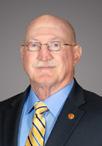
Sam S. Gaston, ICMA-CM, J. Scott Miller, city manager, East Ridge, Tennessee, previously held city manager roles in Leavenworth, Kansas (2007-2015); New Port Richey, Florida (2004-2007); College Park, Georgia (2002-2004 and 1994-2001); Des Plaines, Illinois (20012002); Boynton Beach, Florida (1990-1994); Oakland Park, Florida (1985-1989); Wilton Manners, Florida (1982-1985); and East Detroit, Michigan (1979-1982).
Henry J. Hill III, ICMACM, deputy city manager, Frisco, Texas, previously worked in Melbourne, Florida serving as city manager (1994-2003), acting city manager (1994), and assistant city manager (1988-1994). Prior to these positions, he was town administrator in Adams, Massachusetts (1983-1988); director of administrative services (1983) and budget coordinator (1981-1983) in Collier County, Florida; and management analyst in Alachua County, Florida.

Blair F. King, city manager, Bainbridge Island, Washington, previously served as city manager in Coronado, California (2010-2021); city manager in Lodi, California (20052010); assistant city manager in Milpitas, California (2001-2005); city manager in Half Moon Bay, California (1997-2001); city

Steven Sarkozy, village manager, Estero, Florida, has served in this role for the past 10 years. He previously served as city manager in Carlsbad, California (2014); Bellevue, Washington (2000-2013); Roseville, Minnesota (1989-2000); and Geneva, New York (1984-1989). He served as assistant city manager in Wyoming, Michigan (1979-1984) and Beverley Hills, Michigan (1978-1979). He also served as administrative analyst in Syracuse, New York (1978).

Earlene M. Teaster spent her entire career serving as city manager in Pigeon Forge, Tennessee, from 1980 to 2025. She was the first woman appointed to the city manager role in the state of Tennessee.
Kelly E. Arnold, ICMA-CM Assistant City Manager Goldsboro, North Carolina
Norton N. Bonaparte Jr., ICMA-CM City Manager Sanford, Florida
Steven C. Brown Township Manager East Whiteland, Pennsylvania
Adam T. Brumbaugh, ICMA-CM Township Manager College, Pennsylvania
Joseph A. Calabrigo Danville, California
Blaise J. Caponi Sr. Assistant Township Manager Ridley, Pennsylvania
Deborah Craig-Ray Chief Communication Officer Durham, North Carolina
Timothy J. Dolehanty, ICMA-CM Administrator/Controller Midland, Michigan
Bristol S. Ellington, ICMA-CM City Manager Shoreline, Washington
Donald S. Fisher County Manager Osceola, Florida
Mark S. Fitzgerald Village Manager Menomonee Falls, Wisconsin
Mike Foreman Town Manager Monument, Colorado
Clint P. Gridley Woodbury, Minnesota
Kelly J. Hayworth City Administrator Coralville, Iowa
David P. Hodgkins, ICMA-CM Cary, North Carolina
Genaro C. Iglesias Jr. City Manager South Miami, Florida
Eric R. Johnson City Manager Norcross, Georgia
Benjamin W. Jones Chief Executive Officer Bucks County Water & Sewer Authority, Pennsylvania
David L. Miller Jr. City Administrator Springtown, Texas
Sheryl L. Mitchell Theriot, ICMA-CM Director of External Affairs Southeast Michigan Council of Governments, Michigan
Michael J. Mornson, ICMA-CM City Manager Hopkins, Minnesota
William Patrick Pate, ICMA-CM City Manager
Winston Salem, North Carolina
Jeffrey E. Repp Town Manager St. James, North Carolina
Earl B. Reynolds Jr. Deputy City Manager Danville, Virginia
David Ridpath City Manager Radford, Virginia
Leonard B. Sossamon County Manager Wadesboro, North Carolina
Lee H. Spell City Manager Kingsland, Georgia
Mitchell Stern Borough Manager Mountain Lakes, New Jersey
Jamie Sullivan Town Manager Hampton, New Hampshire
Andrew Tierney Town Manager Hebron, Connecticut
Lenore K. Toser-Aldaz Assistant City Administrator O’Fallon, Missouri
Alan G. Vanderberg County Administrator Kent, Michigan
Robert L. Whritenour Town Administrator Yarmouth, Massachusetts
Michael Wilkes City Manager Olathe, Kansas
Michael B. Williams, ICMA-CM County Administrator Stearns, Minnesota
Mark Abeles-Allison
Abimbola A. Akande
Majed Al-Ghafry
Tim A. Anderson
Thomas B. Bakaly
Belinda Berg
Todd M. Blake, ICMA-CM
Joe Bobadilla
Dane Bolin
Michael E. Boynton
Christopher J. Bradbury
Jeffrey E. Brown
James Gregory Buckley
Mary B. Bunting
Joseph P. Casey
Jeri E. Chaikin
Angela Dawson Christian
Mario Anthony Cifuentez
Greg Clifton
Martin A. Colburn
David E. Cox, ICMA-CM
Christopher J. Dorsey
James D. Drumm
Jerald P. Ducay
David R. S. Duckworth
David Ellis, ICMA-CM
Thomas Ernharth
Denise H. Fitzgerald
Kate P. Fitzpatrick, ICMA-CM
William Gallardo
Anne Marie Gaura
Lewis H. George Jr.
Jorge M. Gonzalez
Alan E. Guard
Jeffrey B. Gushue
Margaret R. Halik
Anthony T. Hamaday, ICMA-CM
John Hofstad
Carol S. Houck
Steve L. Howard, ICMA-CM
Mark A. Jackson
David Junger
George R. Keller Jr.
Richard J. LaFond
John Nathan Lestitian
Julian P. Mansfield
William F. Martin
Stephen May
Scott R. McCarty
Darwin McClary
Scott D. McClure
Julie Miller
David V. Moorman
John Moreno
Freddy Leigh Morgan
Modesto A. Mundo
Scott H. Neal
Gerald Newton
Kenneth D. Noland Jr., ICMA-CM
Shane P. O’Keefe
Shane E. Pace, ICMA-CM
Kelly C. Passauer
Gregory A. Primm
Paul D. Radford
Larry Rains
Rita M. Ramirez
David L. Recor, ICMA-CM
Pamela S. Reece
Timothy D. Rooney
David A. Ruller
Michael D. Schrage, ICMA-CM
Craig Sheldon
John M. Shepherd
Laurie A. Smith
David L. Stack
Paul K. Stevens
Scott C. Stiles
David J. Torgler
Brent D. Trout
Theodore L. Voorhees, ICMA-CM
David Waltz
Dianna S. Wright, ICMA-CM
Anthony J. Zampedro, ICMA-CM
Mike Kyle Ahrens
Derek K. Allen, ICMA-CM
Matt Allen
Christopher Anderson, ICMA-CM
Jill Cain Bailey
Julie Platt Baird
Kevin Baity
John C. Barkley
Timothy J. Baroody
James L. Becklenberg
LeDerick Blackburn
Richard B. Boehm
Elizabeth A. Bonz
James Michael Boudreau
Edward Alexander Broussard III, ICMA-CM
Troy S. Brown
Rod B. Butler
Matthew H. Candland Sr.
Michael J. Cassady
Norbert M. Castro, ICMA-CM
Bradley Daniel Chapulis
Reid S. Charles II
Ted A. Chinn
Bryan R. H. Chodkowski, ICMA-CM
Mark J. Christensen, ICMA-CM
Jerry L. Coalson
Robb W. Corbett
Bryan K. Cosgrove
Kristen M. Crane
David Creery
Joseph S. Czajkowski
Manuel De La Rosa
Russell J. Dean
Brian K. Dehner
Denise M. Dembkoski
Walter L. Denton, ICMA-CM
Hank Dial
Kelly DiMartino
Kim G. Dobbs
Colin E. Donnelly
Kennie D. Downing
William J. Eagen
Brenda W. Eivens
Dennis J. Enslinger
Mike Etienne
Gregory Hugh Ferguson
Hector Flores
Russell W. Forrest
Joseph A. Forte, ICMA-CM
J. David Fraser
James Gailey
Kathleen A. Mocarski Gargano
Carl S. Goldsmith
Susan L. Grant
Jarrod W. Greenwood, ICMA-CM
Matthew H. Greeson
Kristie A. Hammitt
Rebecca Jean Hapgood
Matthew W. Hart
Jennifer Haruyama
Matthew E. Hawkesworth
Michael Hein
Paula Hewson, ICMA-CM Lawrence
Todd Hileman
Phillip Hill, ICMA-CM
Ashley N. Jacobs
Peter K. Johnson-Staub
Robert G. Karlinsey
Jennifer Kimball James
Kristin N. Kazenas
Deron King, ICMA-CM
Clinton M. Kinney
Anne W. Klepfer
Lisa A. Kotter
Carol M. Kowalski, ICMA-CM
ChristopherJ.Lagerbloom,ICMA-CM
Donna M Lake
Pete E. Landrum
Randy Lansing
Kenneth J. Leetham
Michael Legg
Darron J. Leiker, ICMA-CM
Tamara S. Letourneau, ICMA-CM
Alonzo Linan
Katherine G. Love
Kelly Ann Madding
Douglas K. Maxeiner
Deron L. McCormick
Charae T. McDaniel
Rene L. Mendez
Thomas K. Mick
Rodney N Miller
Alfred A. Minner III
Graham Mitchell, ICMA-CM
Martin D. Moore
Scott Morris Moye
Shaun W. Mulholland
Russell Charles Muniz, ICMA-CM
Warren Obenski
Barbara C. Opie
Ken P. Pabich
Todd Pelham
Avril M. Pinder, ICMA-CM
Walker Keith Rattay
Matthew W. Reece
Michael R. Renshaw, ICMA-CM
Michelle Rivera, ICMA-CM
Anthony P. Roberts
Melissa Rollins, ICMA-CM
Frank A. Rush Jr.
Heather D. Sanchez, ICMA-CM
Philip S. Sanders
Douglas P. Sandstrom
John J. Sandy
Catherine M. Schafrik
Bridget P. Schwartz-Manock
Michael A. Sell
Michael S. Sherrouse
Jeffrey F. Silka, ICMA-CM
Keith Skelton
Jeffrey M. Stonehill, ICMA-CM
Hilary M. Straus
Matthew T. Sturgeon
Spencer H. Suter
Maury Lee Thompson
Todd A. Thompson
Brian C. Uhl
Cynthia M. Wagner
Michael J. Ward
Mark Anthony Washington, ICMA-CM
D. Mark Whitley
Tai J. Williams
Stephen Willoughby
Martha Wine
Brandon Zuidema
AbdalmoumenTawfiqAfana
AnneV. Ambrose
LundaPaul Asmani
FrankAllenBabinec
PatrickS.Banger, ICMA-CM
WandaArleneBarnard-Bailey
RobertB.Baxley
ChristinaL Betz
ChadA.Bird
ScottW. Bovick
KentA Brown
Shawn J. Brown
Patrick Brown
MichaelD. Brungardt
LouisM.Buonpane
David R. Burman
MichaelT.Burns,ICMA-CM
CharlieBush,ICMA-CM
CarlA.Cain,Jr.
JuliaA. Cedillo
J.BenjaminChamp
MarvinE.CollinsIII, ICMA-CM
Robert Corder
DanielJ. Coss
J.D. Cox
JaredG. Cypher
J.ScottDarrington
DarylTodd Day
Alexander Diaz
EdwardOwenDickieIII, ICMA-CM
RichardA.Douglas
JanelleJ. Downes
JeffDrobney, ICMA-CM
June Ellis
JustinSilas Ezell
ArethaR.Ferrell-Benavides
Douglas E.Finch,ICMA-CM
LauraA.Fitzpatrick
MatthewJ.Formica
JeffreyS. French
CharlesS.Funderburk,ICMA-CM
Horacio Galanti
HeatherM. Geyer
ChristopherD. Gilbert
JamesL.Gillis Jr.
MarieR.Gleason
Melissa Goff
Roubik Golanian
EllenHabel,ICMA-CM
MarkHaldIII
NatashaS.Hampton,ICMA-CM
Rachel Harlow-Schalk
Randy J. Harrington
Matthew W. Hart
Ryan C. Heiar
Robert Hiss
Jennifer L. Hoffman
Imelda Magadan Huerta
Kevin Hugman, ICMA-CM
Scott M. Huizenga, ICMA-CM
Mitchel B. Humble
Andrew Hyatt, ICMA-CM
Jill R. Ingram
Sheyi I. Ipaye
John Jansons
Antonio Jefferson
Aric Arthur Jensen
Christa L. Johnson
Maurice S. Jones
Julie Karins, ICMA-CM
Timothy V. Kaufman
Christal Kliewer Weber
Kevin Krouse
Tammy A. LaBorde, ICMA-CM
Erica Elisabeth LaCroix
Kevin M. Lahner
Rebecca Landry
John J. Larson
Niel Laudati
Robert C. Lawton
Matthew S. LeCerf, ICMA-CM
Alison Lehman
Dustin Lewis, ICMA-CM
Steven M. Lindner, ICMA-CM
Adam J. Lindsay
Jason Little
Brent Mareck, ICMA-CM
Gregory D. Martin, ICMA-CM
Mark D. McAvoy
Steve L. McClary
Charles Paul Menzies, ICMA-CM
Jack D. Messer
Jodi M. Miller, ICMA-CM
Florence L. Miller, ICMA-CM
Justin J. Miller, ICMA-CM
Aaron Joel Montgomery, ICMA-CM
Emily C. Moon
Bryant Evans Morehead
Todd Ragan Morley
Lisa Murphy
Nancy Newton, ICMA-CM
Aaron Oppenheimer, ICMA-CM
Mark A. Orme, ICMA-CM
Alison Ortowski
Aaron M. Parrish
Randall H. Partington, ICMA-CM
Michael Todd Paulhus
Michael C. Peoples, ICMA-CM
Peter Pirnejad
MichelJackPogge-Weaver, ICMA-CM
Mark Prestwich
FrancineL.Ramaglia, ICMA-CM
AudreySeymourRamberg
Richard J. Reade
Brian Richards
Patrick Robinson
Jessica Roth
TravisP.Rothweiler,ICMA-CM
Ron Ruthven
Darlene Sanchez
Tony Scheivert
ToddJ.Schmidt
MikeL.Schumacher
BarryShelton,ICMA-CM
Shelli Siemer
VictoriaG. Simonsen
Mike Skibbe
Tina Smith-Dean
PhillipD.Smith-Hanes,ICMA-CM
DavidM.Smoak
Laura Snideman
MatthewL.Spoor,ICMA-CM
Matt Staehling
RoscoeCooperStelford III
JasonA. Streetman
RobertStrope,Sr.
Matthew Sturgis
Vaughn Sullivan
WilliamR.Summers,ICMA-CM
JamesP. Taylor
BrianS.Thrower,ICMA-CM
StevenJ.Tilton
Billy Tyus
Maria Villagomez
Joan Walls
JohnWalsh, ICMA-CM
ChrisA. Ward
JamesA.Welch
Heidi Welsch
JohnD.Wenzlick
Dakisha Wesley
MarkAllenWhitfield
ZacharyL. Williams
SophieL. Wilson
BerthaT. Winbush
ChesterBlaineWing III
Robert Wingenroth
RalphWise, ICMA-CM
TimWolff, ICMA-CM
RobertJ.Wood
HeidiN.York, ICMA-CM
TimothyJ.Young, ICMA-CM
Reimagining community through a visionary framework emphasizing trust, connection, and collaboration.

BY JON MALLON, CHRISTA DANIELS, PhD, TOM ROSSMAN, AND MICHELLE KOBAYASHI
At ICMA, we believe that the future of community leadership is defined by vision, creativity, and a steadfast commitment to progress. We are dedicated to nurturing innovative leadership and empowering entrepreneurial ideas that shape resilient and vibrant communities. This article presents the innovative thought leadership of Telosa and members of the Telosa team, introducing important community-building strategies detailed in an approach titled Community 2.0.
At their core, cities are about people. When residents feel a sense of belonging and shared purpose, communities become healthier, safer, happier, more prosperous, and more vibrant. Strong social bonds, built on trust and collaboration, make places more innovative and resilient. Decades of research confirm that social capital is as critical to civic success as roads, bridges, or technology. We are living in a moment of extraordinary change. Advances in technology, shifting demographics, evolving economies, and a growing sense of polarization are reshaping daily life at a pace that challenges traditional
governance. This constant motion creates both challenge and opportunity. The communities that thrive will be those that cultivate trust, strengthen collaboration, and nurture connection—adapting quickly while holding fast to a simple truth: People— residents, neighbors, families— are the critical infrastructure of a thriving city.
Trust is the currency of effective governance. Yet across many communities, that trust is fraying. Residents question whether governments listen, act fairly, or deliver on

promises. National polarization amplifies these doubts and spills into local debates, discouraging participation and delaying progress.

A study by Polco and the Alliance for Innovation found that nearly 70% of local officials believe political division is harming their communities. The impacts are visible: stalled projects, disengaged residents, and weakened resilience. Still, local governments remain uniquely positioned to bridge divides. Unlike national politics, they deliver visible results, foster direct interaction, and provide platforms for inclusive problem-solving. With their role as strong institutions and trusted anchors, local leaders can pursue strategies to rebuild trust, intentionally treating connection, collaboration, and belonging as essential infrastructure for civic life.
Telosa is a people-first city model that plans to co-design with residents, measure what matters, and reinvest value from the community into expanded opportunity and quality-of-life outcomes. When entrepreneur Marc Lore unveiled his vision for Telosa, a new city imagined for the United States, much of the attention focused on sustainability, architecture, and technology. But perhaps the
boldest part of the vision isn’t physical at all—it’s social.
Lore imagined a place where opportunity is accessible to all, where prosperity is broadly shared, and where community itself is the foundation for innovation and resilience. Guided by the values of being open, fair, and inclusive, Telosa’s mission is to create a more equitable and sustainable future—one where trust and belonging are as intentionally built as the essential infrastructure for civic life. Telosa is envisioned not just as a physical city but as a blueprint for communities everywhere—a living laboratory where lessons can inform today’s cities and counties.
To help bring the vision to life, the Telosa Community Foundation has formed a unique partnership that bridges sectors: academic experts from Dartmouth, the Henry George School of Social Science, and the private sector through Polco, a leading
civic analytics and engagement company. Together, this coalition is advancing a new framework called Community 2.0. Although Telosa is a city of the future, its central idea that people thrive when they feel connected and invested in one another is urgently relevant for every city and county today.
Community 2.0 is a framework and an implementation approach that treats connection and trust as the core infrastructure of civic life. It combines both in-person and digital contact by blending traditional anchors such as schools, neighborhoods, and local government with modern approaches like digital engagement, inclusive planning, and data-driven decisionmaking to rebuild reciprocity and belonging.
It is designed to be multisector, drawing in residents, nonprofits, businesses, and governments to co-create
solutions that strengthen trust and foster meaningful engagement. This approach goes beyond communication to ensure that community members are actively shaping decisions that affect their daily lives.
Tools like participatory budgeting, cultural programming, and systematic engagement help local leaders make collaboration and shared responsibility the foundation of civic life. When trust and engagement are prioritized, communities experience safer neighborhoods, stronger social bonds, better well-being, deeper civic participation and more effective governance, creating a resilient and connected public life.
For more information on Community 2.0, visit cityoftelosa.com/ 1-introduction-r2/.
Community 2.0 is not just a vision—it’s a set of practical strategies local leaders can
use to strengthen trust and belonging. It means creating spaces for connection through parks, libraries, and neighborhood hubs, while advancing equity with policies that expand affordable housing and support marginalized populations. Civic participation deepens when engagement moves beyond conversations to include structured approaches such as surveys, participatory budgeting, and facilitated forums that directly inform planning and investment.
Cross-sector partnerships with nonprofits, universities, and businesses expand capacity and spark innovation across health, education, and economic development.
At the same time, Community 2.0 embraces technology as an ally. Digital engagement platforms lower barriers to participation and bring in new voices, while AI and data analytics help governments better understand resident priorities

measure what matters most.
and allocate resources transparently. Hybrid models ensure online input translates into in-person collaboration, and cultural programming reinforces identity and belonging. Together, these strategies illustrate how Community 2.0 harnesses both timeless community anchors and modern tools to build reciprocity, trust, and collective problem-solving.
There are numerous ways to strengthen community life, but the best place to begin is by measuring the connections that hold people together. Just as cities maintain roads and manage budgets, they can also take stock of trust, belonging, and collaboration, which are the civic bonds that form true community infrastructure. To make this easier, Telosa and Polco have created the Guidebook to Measure Community Connections, a free resource that any community can use.1 It provides a clear baseline of where relationships are strong and where they need attention, helping leaders focus resources where they will have the greatest impact and can track progress over time. The first step to building stronger, more resilient communities is simple: measure what matters most.
● Buffalo Grove, Illinois, launched a Community
City Champions program to integrate diverse voices into decision-making leading to higher participation rates.2
● Santa Barbara County, California, used an online housing simulation to transform conflict into collaboration.3
● Austin, Texas, built trust with its Neighboring Partner Program, where residents cofund projects with the city.4
● Portland, Maine, developed a city park system with public spaces to foster resident interaction and connection, and to host community events such as festivals, farmers markets, and cultural celebrations.
● Elk Grove, California, used data-driven decision making to build trust with residents through transparency and accountability.5
● Internationally, Dutch cities pioneered intergenerational housing, offering students free rent in exchange for supporting elderly residents—a simple but transformative way to build social bonds.
These examples highlight that the most powerful innovations are often social, not just technological. If you have success stories from your own community, we’d love to learn from them. Please share your stories and insights via email to pm@icma.org.
Why Community 2.0 Matters Now
From climate resilience to AI disruption, today’s most
pressing challenges are fundamentally community challenges. They cannot be solved by one sector or ideology alone. They demand collective solutions rooted in connection and trust.
Community 2.0 reframes trust and belonging as critical infrastructure to be invested in, measured, and systematically strengthened. It shifts civic bonds from being “nice to have” to being prerequisites for prosperity, safety, and resilience. Because global disruptions shape local realities, strong civic fabric enables local governments to act as laboratories of innovation where inclusive, communitydriven solutions model responses for the world.
As Martin Luther King Jr. observed, “We are caught in an inescapable network of mutuality, tied in a single garment of destiny.” Local leaders have the tools and the responsibility to weave that garment stronger than before.
For today’s city and county executives, the message is clear: You are stewards of community trust and connection. Every budget cycle, planning process, and engagement initiative is an opportunity to strengthen civic fabric. Start with small steps: design spaces that foster belonging, support civic dialogue, invest in equity, expand affordable housing, and measure progress along the way.
The future of communities will not be defined only by technology or sustainability. It
will be defined by whether people trust one another, feel connected, and are invested in shared success. The most innovative communities of tomorrow won’t just be smart or sustainable. They’ll be deeply connected, deeply resilient, and deeply trusted.
1 https://cityoftelosa.com/wp-content/ uploads/2024/09/CommunityConnections-Guidebook-v1.1-R5.pdf
2 https://blog.polco.us/buffalo-grovessimple-strategy-reach-diverse-voices
3 https://www.independent. com/2023/12/26/county-of-santabarbara-challenges-residents-to-create-ahousing-plan-virtually/
4 https://www.austintexas.gov/ department/neighborhood-partneringprogram#:~:text=Through%20the%20 Neighborhood%20Partnering%20 Program,project%20that%20benefits%20 your%20community.
5 https://blog.polco.us/elk-groveimproves-services-data-driven-mindset
JON MALLON is CEO of the Telosa Community Foundation, a nonprofit advancing a people-first city model and practical tools for existing communities.

CHRISTA DANIELS, PhD, is a resident scholar at Dartmouth College’s Irving Institute for Energy and Society and a lecturer at the Guarini School of Graduate and Advanced Studies.

TOM ROSSMAN is historian and senior advisor to the Telosa Community Foundation and a board member of the Henry George School of Social Science.
MICHELLE KOBAYASHI is executive strategist for Polco/National Research Center.


BY RENÉE CUMMINGS
A city council meeting in a small town. A motion passed. A line item signed. A system installed. Maybe it’s a predictive model that promises to make emergency dispatch faster. Maybe it’s a tool that determines eligibility for housing benefits. The people in the room go home thinking they’ve done their jobs. And they have. But the next morning, a video goes viral. A grandmother denied food assistance. A teenager flagged for surveillance. One line of code, buried deep in the decision logic, carries the weight of centuries of inequality and now it’s everywhere. No government decision is truly local anymore. Not in the age of TikTok. Not when livestreams and YouTube clips can turn bureaucratic procedure into social media spectacle. What was once a zoning call, a procurement contract, or an automation rollout is now a meme, a movement, a mess. The distance between city hall and global headlines is measured in milliseconds.
Behind every administrative act now looms the presence of artificial intelligence. It may be invisible to most—the procurement officer clicking through software options, the case manager relying on a risk score—but its influence is not. AI systems are quietly scripting the futures of communities, counties, cities, countries, and continents. Sometimes invisibly. Sometimes catastrophically. And while AI is optimizing
the human experience and reimagining business models across disciplines and industries, it is also creating new ethical and safety challenges as fast as it solves old ones. These systems mimic human cognition. They give our computers a humanlike feel. But they do not give them human judgment.
It was inevitable: we’ve entered an era where the algorithm has become a public servant. The question is, who does it serve? Budget forecasts shaped by predictive models. Service delivery prioritized by scoring systems. Procurement driven by recommendation engines. And behind it all, a promise: faster, smarter, cheaper governance. Real-time service delivery excellence.
But promises aren’t policies. Systems don’t solve politics. And algorithms, in the hands of government, become more than math; they become moral actors. Consider the child welfare algorithm in Pennsylvania that assigned risk scores to families. These weren’t technical glitches. They were devastating design decisions and bad algorithmic policy that punished the poor, the marginalized, the historically underserved.
Several high-profile scandals have revealed the dangers of using AI and algorithmic tools. In 2016, ProPublica exposed the COMPAS recidivism algorithm for its racial bias, disproportionately labeling Black defendants as high-risk and raising concerns about
fairness and transparency in sentencing. In 2020, Detroit police wrongfully arrested Robert Williams, a Black man, due to a faulty facial recognition match, highlighting the technology’s high error rates for people of color and sparking national outrage. Similarly, the LAPD’s use of the predictive policing tool PredPol until 2019 led to the over-surveillance of Black and Latino communities without proven benefits, prompting its cancellation. Together, these cases illustrate how opaque, datadriven systems can reinforce systemic bias, undermine due process, and erode public trust when deployed without accountability.
In July 2025, the federal government issued its AI Action Plan under Executive Order 14179: Removing Barriers to American Leadership in Artificial Intelligence. National in scope, but its weight falls squarely on local shoulders. City and county governments aren’t just implementers of AI policy. They are test beds.
Sandboxes. Risk zones. First responders. And the plan asks a lot:
• Train a new AI-ready workforce—from electricians to data technicians.
• Adopt ethical procurement processes, including bias audits and impact reviews.
• Oversee AI infrastructure, balancing economic gains with environmental responsibility.
• Align local regulations with national standards or risk losing federal funding.
• Engage the public not just in deployment, but in design.
In theory, these are steps forward. In practice, they are seismic shifts in how local governance operates. It’s easy to talk about AI in the abstract. Easier still to sell it as salvation. But in the real world, the city manager of a southern town might wake up to find a software-triggered benefits cutoff that hits hundreds of residents. The deputy commissioner may have to explain to a mother why her son was misidentified by facial recognition, wrongfully arrested, traumatized. The mayor may be in

conflict with a police chief who swears the AI tool works even as community trust collapses.
AI doesn’t just automate decisions. It codifies judgment. It scales error. It erases nuance, the very thing local government is designed to understand. And it does all this behind closed doors, proprietary code, trade secrets, and black-box algorithms that even public servants can’t access, let alone explain.
So how do you govern the invisible? The outsourced? The unaccountable? You start with clarity. You build capacity. You take stock.
Know Your Systems. Conduct an AI inventory. Know where algorithms live— budgeting, hiring, emergency response, permitting, service delivery. Audit for vulnerabilities. Deploy due diligence. Think duty of care. Consider a duty to warn. Always uphold due process.
Set Procurement Standards. Don’t buy what you can’t govern. Every AI contract should include transparency, auditability, explainability, impact assessments, change management strategies, crisis response plans, and business continuity plans.
Establish Oversight. Form interdisciplinary committees: IT, legal, HR, equity officers, and— most importantly—residents and community stakeholders. Interdisciplinary teams are a competitive advantage. Remember: if AI has limits, you have a duty to warn.
Invest in Literacy. Your staff doesn’t need to be engineers, but they do need to understand what these systems do—and what they hide.
Engage the Public. Hold town halls. Run workshops. Share surveys. Host design sessions. Let people see and
shape the systems that shape their lives.
Because AI, for all its power, doesn’t see context. It doesn’t see history. It doesn’t see the mother working three jobs or the teenager raising his siblings. It sees data points. Probabilities. Risk scores. And it moves fast. But these decisions aren’t just metrics. They impact human lives.
Indeed, the algorithm is now a public servant. But it is one without accountability, unless we build it in. One without empathy, unless we demand it. One without understanding, unless we code it and ensure good governance of all AI systems. Every algorithm carries a deeper story: a story about trust. About confidence. About access, equity, and opportunity. But trust is fragile. It may not survive another scandal rooted in a
system no one understands or a decision no one can explain. AI is not just a tool for outsourcing responsibility. It is a test of our values. The public servant of the future may be an algorithm. But only principled, prepared, proactive, and ethically vigilant leaders can ensure AI is trustworthy and serves the public good, and is designed, safely and responsibly, with the public interest in mind.

CUMMINGS, a 2023 VentureBeat AI Innovator Award winner, is an AI, data, and tech ethicist, and the first data activist-in-residence at the University of Virginia’s School of Data Science, where she was named professor of practice in Data Science.
These project-based engagements are designed to give organizations flexible access to work with data science students, without the need for a full internship program or formal mentorship expectation.
An upcoming conference offering actionable insights and practical strategies on leveraging AI and data in public service.

These 6-week, non-credit engagements offer a mix of asynchronous learning and live, online sessions discussing applied case studies and relevant research, with multiple domain experts joining to support and deepen the engagement.
Learn more about these opportunities.
Responsible Data Science for the Common Good
Leadership in local government has shifted from being authoritative and hierarchical to
a more inclusive, empathetic, and authentic approach.
BY MEREDITH REYNOLDS
Leadership no longer looks like it did a decade ago, and I am here for it.
Behaviors from early in my local government career informed the way I thought about what power, influence, and success looked like. I heard stories about a manager who would throw away any correspondence that didn’t spell their name correctly, and another manager who screamed and threw chairs when they were frustrated. I witnessed managers mine ideas from up-and-coming staff and pass them off as their own or take credit for a group’s work to propel themselves up in the organization and were rewarded for it. I watched managers shut down ideas worth pursuing with the simplest “we’ve tried that before.”
I was even the subject of this behavior when I was put on the spot in an all-management meeting by a director who instructed me to move funding from one project to another, which was against city policy (and likely, the law). When I suggested an appropriate alternative, he loudly taunted “well aren’t you uppity” while a whole table of managers looked down the table at me in silence.
These “leadership” behaviors were not reserved for clandestine closed-door meetings; they were on display for everyone to see. And while there were plenty of good things about my early career experience, these managers signaled what success looked like as a leader:
• Giving orders rather than seeking input, valuing quick decision-making, even at the cost of inclusion.

MEREDITH REYNOLDS is deputy city manager of Long Beach, California, USA, and board chair of Engaging Local Government Leaders (elgl.org).
• Treating someone who questioned as disruptive, reacting defensively to challenge or disagreement.
• Prioritizing compliance and hierarchy over collaboration, performance optics over substance.
• Viewing feelings as irrelevant or unprofessional.
• Dominating conversations, using volume or intensity to assert authority, and interrupting or talking over others (especially women or junior staff).
These leadership behaviors smothered any openness to other styles of leadership and there was little recognition of social-emotional skills. In this work environment, getting noticed and rewarded by these types of leaders meant assimilating to behave like those who were “successful” who came before me. Yet, these behaviors didn’t resonate with me. They wore down what I valued in myself, which has taken years to retool.
Looking back, these approaches never made sense to me in the local government context because our work to serve the community required a team of staff with diverse backgrounds and lived experiences to make decisions. And central to this are leaders who can listen deeply, adapt, and respond with humility, empathy, transparency, and inclusiveness to build public trust.
These outdated approaches also didn’t feel like me, and now that I’m in a place of leadership in local government, I’ve realized that much of what “success” looked like no longer serves me. I now see how power comes from feeling grounded and self-assured, not dominance or control of others from outdated leadership archetypes. And as it turns out, my leadership style is trending.
A recent study by economist Sylvia Ann Hewlett compared data from 2012 and 2022 showing the evolution of the perceptions of effective leadership traits across three core categories: gravitas, communication, and appearance.1 The study reveals a distinctive shift in how executive presence is defined and points to an era of leadership that values inclusion, emotional intelligence, and authenticity just as much as decisiveness and vision. The most effective leaders are those who are more inclusive, more empathetic, and more human. The path to credibility and authority as a leader has widened to include skills that were previously undervalued or even dismissed.
In 2012, confidence, decisiveness, integrity, and pedigree topped the list. In 2022, inclusiveness and respect for others surged in importance and pedigree dropped from being a top attribute. In the past, leaders were expected to command a room and project force. Now a listen-tolearn approach, ability to read a room, and authenticity have gained ground, and while conveying one’s message clearly, engagingly, and persuasively to an audience is still important, how one speaks matters more. Today, a polished appearance coupled with authenticity, health, and a curated online voice are valued over conventional beauty or physical presence. Leadership is now relational, not hierarchical, so a leader who shows up with intention, treats others well, and prioritizes inclusion, mental health, and trust is who others want to be around and support.
In local government, these changes aren’t just trends; they’re essential. Trust, community engagement, and interdepartmental collaboration are key drivers of local governments that effectively serve their communities.
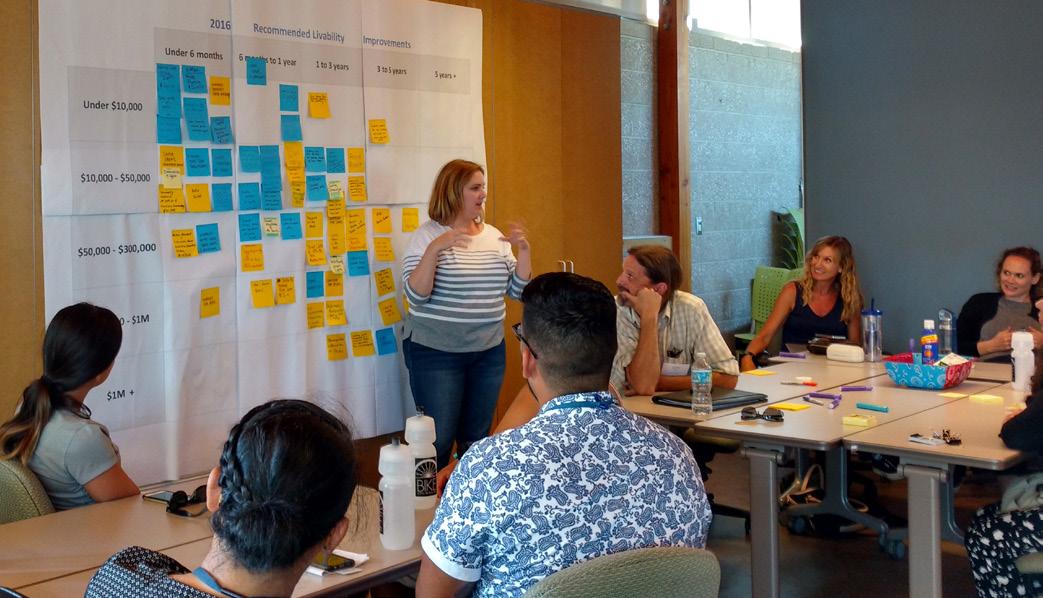
Local governments depend on leaders at every level who can connect—not just command—through:
• Inclusiveness and respect for others.
• Vision grounded in collaboration.
• Emotional intelligence and empathy.
• Authentic communication rooted in service.
• The ability to adapt across teams, platforms, and community needs.
Even though this human-centered leadership style was inherently with me all along, intentionally embracing it was still a hard transition because I had to unlearn decades of behavior that no longer served me, my team, my organization, or my community. Here are the leadership traits I work on to show up as my authentic self:
Gravitas
• Practice inclusive decision-making. Solicit input across departments and communities. Create seats at the table for those historically marginalized. Affirm contributions and invite dissenting views.
• Build a values-based narrative. Lead with the “why” behind policies and priorities.
• Develop emotional awareness. Respond to tension or resistance with curiosity, not defensiveness. Admit and learn from mistakes and uphold shared values.
Communication
• Listen to learn. Listen more than you speak. Lead meetings with open-ended questions and active reflection.
• Sharpen your hybrid presence. Speak with clarity, use visuals well, and follow up thoughtfully. Be concise, calm, and purpose-driven. Zoom presence and asynchronous communication are now critical skills.
• Own your voice. Authenticity doesn’t mean oversharing; it means aligning your communication with your values and personality.
Presence
• Show up intentionally. Let values, not conformity, shape how you present. Balance assertiveness with empathy.
• Curate your digital voice. Identify your values and develop your leadership voice. Use LinkedIn, newsletters, or internal communications to reinforce your presence.
• Prioritize energy over perfection. Take care of your physical and mental well-being as leadership assets, not luxuries. Embody energy, not perfection.
Leadership traits once seen as “soft” are now recognized as strategic. As expectations evolve, so must our leadership development strategies and our recognition of who is ready to lead. For those early in your career journey, shake off the shackles of expectations to mimic outdated leadership styles. This is your permission to lead differently. For those already in positions of power, this is your invitation to model presence that is both powerful and personal. Embrace the full spectrum of what it means to lead with authenticity, empathy, and purpose.
ENDNOTE
1 https://hbr.org/2024/01/the-new-rules-of-executive-presence
Two lifelong friends share a deep bond formed during childhood that has endured into their professional lives in local government leadership.
BY TC BROADNAX AND RONNIE GUEST
PM sat down with longtime friends TC Broadnax, ICMA-CM, city manager of Austin, Texas, and Ronnie Guest, a former city manager who is currently the senior program manager of military outreach at ICMA. Their shared experience growing up in humble beginnings has shaped their approach to community service and team building in their careers as city managers.
How did you first get to know each other?
Ronnie: Our journey goes back 50 years, growing up together on the same block in Topeka, Kansas, USA. We’ve known each other since we were 4 or 5 years old. We spent many of our days riding bikes and playing football, and every summer our bond was strengthened on the basketball court at the Boys and Girls Club. Our friendship remains equally as strong today, even as adults and professionals.
How did the interest in local government take root for you both?

TC BROADNAX, ICMA-CM, is city manager of Austin, Texas, USA.

RONNIE GUEST is senior program manager of military outreach at ICMA.
Ronnie: My first understanding of local government is rooted in my father being a Topeka police officer. I didn’t know that was even considered part of local government. All I knew was that he served the community and helped keep us safe. After high school, I went into the United States Army, and after my military career, I worked several years in the corporate arena. After relocating to San Antonio, I joined the police department as a senior management analyst and my passion for service began to blossom. My first several years working in the police department and other city departments lit such a fire inside me that local government and serving others became all I sought to do professionally.
TC: My interest in local government started in college after taking several political science and public administration courses. I served as an intern in the economic development department of the city of Topeka, which allowed me to fully understand the many things local governments were responsible for. After that, I knew I wanted to be a city manager and have been blessed to work with so many incredible individuals and serve communities in several large cities throughout the country.
What do you have in common as local government leaders?
Ronnie: Something TC and I have in common is that we both care about people at our core and truly understand the challenges that many are faced with, as we both grew up with humble beginnings. We also know the importance of building an effective team around you in order to be successful. This began at an early age for us. When we played basketball, we would take into account each player’s skills to build a winning team. In local government, city managers equip their teams with staff that have the right skills to support the organization and provide the best services possible to the community.
How have you leaned on each other throughout your careers?
Ronnie: I’ve reached out to TC on numerous occasions over the years, especially when I first became a city manager. I believe he was more excited than I was at that moment. When you’re the CAO, there is not one person in your community with the same job as you. You need a strong peer network of those in your profession who you can reach out to, bounce ideas off of, and vent frustrations to. The friendship that TC and I had growing up as kids and young men has helped us better understand what the other is going through on the job.
TC: I would often reach out to Ronnie, particularly during the pandemic, to discuss community response issues. While we were both city managers, we managed different sized cities, so hearing a different perspective was beneficial for us both. Broadening the tent and inviting others into our circle within the local government profession has made both of us stronger and more resilient. This is our foundation for building a strong network of dedicated professionals and furthering the pipeline of future local government leaders, especially in the city manager ranks. So, I ask, “who’s on your bench?” Who in your pipeline is ready to take the next step when you decide to step aside from your career in local government?
Our careers have been forged through a dedicated commitment to serving others and giving 100% of our ability to make a difference in the lives of those we serve, no matter what community we’ve been blessed to lead.

For over 50 years, we’ve supported public service professionals with retirement solutions tailored to their needs. Moving forward we’ll be expanding our mission: offering not only workplace retirement plans, but new ways to deliver on the needs of our customers by supporting individuals and their families as their financial lives change.
At MissionSquare, you don’t have to choose between scale and service. We are, and will remain, a company that prides itself on delivering outstanding service, effortless technology, and quality investments.
We’re big enough to deliver on your diverse financial needs, yet small enough to do so with exceptional care and connection. For more information, visit www.missionsq.org
Create a culture where curiosity is encouraged and new ideas are welcomed.
Local governments face numerous challenges each day in serving their communities. Residents expect the leadership of their city/town/county to respond in a timely and cost-effective manner. These expectations can be daunting, even for the most dedicated and talented employees. Here are some strategies on how assistant chief administrative officers (ACAOs) can seek innovative approaches to meeting these challenges.
Many local government professionals are curious by nature. They like asking questions, exploring new approaches, and learning in general. But it’s important to pair curiosity with a commitment to trying out new ideas in your organization and learning from these experiments.
How can you be a champion for curiosity? It can be as simple as taking the time to learn more about your community and organization and being on the lookout for new ideas. Invest time in meeting with residents and employees to learn about what’s working and what isn’t. Explore what other cities or counties in your region or state are doing and call a colleague for their insights.
Once you come across a new idea or approach, dedicate the time to dig deeper to see if it’s a good fit. Share this desire to explore new ideas with your CAO and hear their perspective on trying out a new approach. Use colleagues and coworkers as a sounding board to see if trying a new idea is warranted.
Innovation does not have to originate just from managers and directors, great ideas come from employees across all levels. As an ACAO, one of your key responsibilities is ensuring these great ideas are heard and evaluated.
Creating an environment in which innovation is encouraged requires work. In particular, it requires creating a culture in which every employee is inspired to think critically about how services are provided and ask key questions to see if other ideas should be considered.

SHANNA SIMS-BRADISH, ICMA-CM, is assistant city manager of University Park, Texas, USA.
But it doesn’t stop with just encouraging new ideas. An effective local government professional also helps create an environment where new ideas can be explored. This is not for the faint of heart because it requires the courage to take a risk. Risk-taking is a key attribute for high-performing organizations and in many ways is a learned skill. Employees should understand that calculated risk-taking is not something to be punished for, but instead something to be celebrated. The willingness to take appropriate risks often starts with leaders who encourage new ways of thinking across all levels of the organization. Ask yourself:
BY SHANNA SIMS-BRADISH, ICMA-CM
• When was the last time you championed trying a new approach to city/county services?
• When was the last time you personally proposed a different policy or program for your organization?
• How can you help facilitate new ideas with the departments you work with?
• When faced with challenging circumstances, how can you look to new approaches to help find solutions?
Local government managers must lead the way in creating an environment where new ideas are regularly welcomed and evaluated.
Tenet 8 of ICMA’s Code of Ethics states that members will “continually improve professional capabilities and those of others while fostering growth and development through ethical leadership and effective management practices.”
Local government professionals can commit to professional development through attending conferences, participating in training programs, and reading articles and books to enhance their skills. These same professional development opportunities are great ways to seek out new ideas. Commit to learning about how other municipalities and counties are finding creative ways to provide services that are also challenging your organization. Make connections with colleagues and learn about what is working for them. Great ideas are all around us if we actively look and listen.
Proposing new approaches can be tough work. As an ACAO, you can help create an environment where new ideas are encouraged. It can be as simple as taking the time to thank fellow employees who share their ideas, or as formal as creating an innovation council to identify best practices and to help stimulate inventive ways to serve residents or employees. What matters the most is consistency in your efforts to encourage and implement innovative approaches that improve both your community and your organization. An agile ACAO can provide this encouragement in everything from daily hallway conversations to presenting service options in city council meetings.
ACAO’s often don’t have all the answers when it comes to tackling hard problems. But they can often be resourceful when it comes to working on tough issues. Accept the challenge to create an environment in your organization in which new ideas are not only welcomed, but encouraged.

Technology is rapidly changing how local governments communicate with the public. Here’s what’s happening.
Every community depends on clear, effective communication between local government and its residents. Today’s cities and counties must reach residents, community organizations, businesses, and other government agencies more than ever before.
Digital tools offer new ways to connect with individuals and groups through social media platforms, mobile apps, text alerts, digital meeting management, and online forums. Some tools work as integrated platforms that combine multiple functions.
These tools require careful planning, time, and staff attention. Each has advantages and drawbacks. Some cost little or nothing to use, while others require ongoing subscription fees.
Smart public communication policies help inform residents and officials about key issues, handle emergencies, solve problems, and encourage participation. They help people understand community challenges and opportunities while building trust.

MARC PFEIFFER, an ICMA Life Member, is a marginally retired New Jersey town administrator and state agency manager. He is currently a senior policy fellow and assistant director at Bloustein Local, a unit of the Center for Urban Policy Research at Rutgers University.
(marc.pfeiffer@ rutgers.edu)
Meeting management systems include agenda and document tools, often with live streaming and meeting playback capabilities.
Mobile apps can feature problem reporting (311 systems) that integrate with your existing network and workflow. Survey and polling tools are also available.
Data management and website platforms can include comment forums, newsletter integration, maps, and open data portals. Other tools support online town halls and discussion forums.
Social media tools excel at promoting positive community developments—events, recreation activities, and achievements. This includes local online news sites, helping build resident pride and engagement.
City/county communications management has evolved significantly with digital platforms, creating a specialized market of vendors offering comprehensive solutions for local governments. These services address the unique challenges cities, counties, and other municipal entities face in managing public communications across multiple channels.
Each community’s needs differ from others, even those with similar demographics and budgets. Public
BY MARC PFEIFFER
expectations and traditions also influence how officials communicate with constituents.
While digital tools offer many benefits, not all residents have equal access. Communication strategies must consider those without reliable internet connection, digital technology knowledge, or English fluency.
Certainly continue using traditional tools like printed materials, signage, local and municipal cable TV, radio, and newspapers with their local websites. Whether digital or traditional, communication efforts should be accessible and inclusive. This means providing language translation services, considering disabilities, and ensuring all voices are heard.
AI chatbots and web-based translation tools can help translate important notices and government communications. To ensure reliability, native speakers should review AI-generated translations to ensure proper syntax, grammar, and context. Humans should regularly ensure that the accuracy and tone of AI responses meet your expectations.
Social media management platforms form the foundation, allowing you to schedule, publish, and manage content across Facebook, Twitter, Instagram, LinkedIn, and other platforms from centralized dashboards. These tools often include content calendars, approval workflows, and team collaboration features essential for government communications requiring oversight and compliance.
Monitoring and listening services scan both official city/county accounts and third-party platforms like Nextdoor, Reddit, local Facebook groups, and news sites. These systems use keyword tracking and sentiment analysis to identify emerging issues, resident complaints, or developing crises requiring a local government response. Advanced platforms can detect trending topics, track hashtags related to local events, and monitor mentions of city/county officials or departments.
Analytics and reporting capabilities help local governments understand communication effectiveness through metrics like reach, engagement rates, demographic breakdowns, and content performance. Many platforms
provide customizable dashboards and automated reports that help communications teams demonstrate value and adjust strategies based on data.
Crisis communication tools offer rapid response capabilities, including alert systems, pre-approved message templates, and escalation protocols. These features become particularly valuable during emergencies, public health situations, or controversial local issues requiring coordinated communication responses.
Resident engagement features increasingly include two-way communication tools, allowing residents to submit requests, participate in surveys, or engage in structured feedback processes directly through social media channels. Some platforms integrate with existing 311 systems or resident relationship management tools.
Compliance and archiving services address government communications’ unique regulatory requirements, ensuring social media content meets public records laws, accessibility standards, and retention policies. These tools often include legal hold capabilities and audit trails.
The market continues evolving with artificial intelligence integration for automated content suggestions, predictive analytics for issue identification, and enhanced accessibility features. Mobile-first solutions are becoming standard as government users and residents increasingly access these platforms through smartphones.
Many vendors now offer integrated suites combining social media management with website content management, emergency notification systems, and broader digital government platforms. This reflects the interconnected nature of modern local government communications. The focus has shifted from simple posting tools to comprehensive reputation management and resident engagement systems that help local governments build stronger community relationships through strategic digital communications.
Start by contacting peer communities and consulting your own technology and communications experts. Use government
technology websites and publications, professional associations, webinars, and vendor resources.
The most effective communication is two-way collaboration, not a one-way information stream. Digital tools can help keep communication lines open and active, creating more responsive and vibrant communities where voices are heard and concerns are addressed promptly. However, two-way communications can bring out the worst in some people who may use these tools to harass local officials or those who disagree with them. Carefully consider your choices and be prepared to respond appropriately.
Remember that local government has an essential responsibility to keep taxpayers informed about how their money is spent. Prudent spending on public communications fulfills that responsibility. Effective city/county communication in the digital age requires a thoughtful, strategic, and inclusive approach. By using the right mix of digital and traditional tools, local governments can strengthen community engagement, improve transparency, and build more vibrant, responsive communities.
DO:
• Be consistent and regular in your communication.
• Use plain language and avoid jargon. (Use an AI chatbot to rewrite!)
• Assess content by putting yourself in the shoes of the reader.
• Respond promptly to inquiries and comments.
• Share both successes and challenges transparently.
• Use a mix of tools to reach different audiences.
• Provide accurate and up-to-date information.
• Encourage and enable public participation.
• Use visuals to enhance understanding.
• Have clear social media policies for staff.
• Monitor engagement metrics to improve.
DON’T:
• Ignore negative feedback or criticisms.
• Share personal opinions on official channels.
• Use official channels for political campaigning.
• Share unverified information or rumors.
• Engage in arguments or heated debates online.
• Use overly casual or unprofessional language.
• Share sensitive or confidential information.
• Overcomplicate messages with technical details.
• Neglect accessibility considerations.
• Be inconsistent across platforms/departments.



